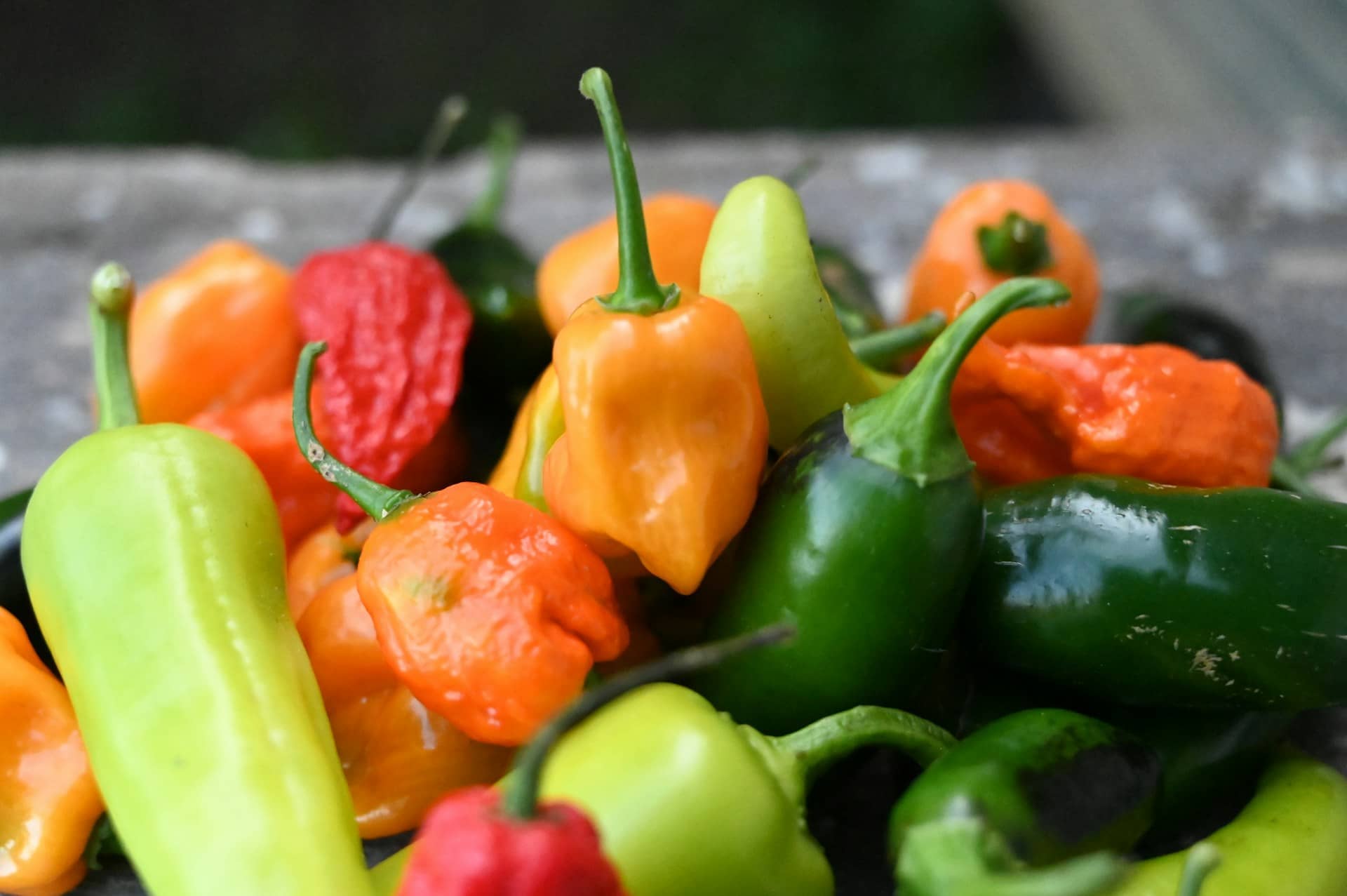There’s nothing quite like the moment when you bite into a pepper you’ve grown yourself and discover that perfect balance of heat and flavor dancing on your tongue.
Three years ago, I made what seemed like a simple decision that completely transformed my garden—and my palate. I was standing in the seed aisle of my local garden center, overwhelmed by the dozens of pepper varieties available, when an elderly gentleman approached me.
“First time growing peppers?” he asked with a knowing smile. When I nodded, he handed me a small packet of habanero seeds. “Trust me on this one,” he said. “Most people think it’s just about the heat, but wait until you taste the fruit hiding behind the fire.”
That conversation changed everything. What started as a curiosity about growing “just a few peppers” has evolved into a passionate journey through the incredible world of capsicum flavors.
Today, I’m growing over 33 varieties, each with its own personality, and I’ve learned that the most rewarding peppers aren’t necessarily the hottest—they’re the ones that tell the most delicious stories.
Understanding the Language of Heat and Flavor
Before we dive into specific varieties, let’s talk about something crucial: the relationship between heat and flavor. The Scoville scale, developed by Wilbur Scoville in 1912, measures the concentration of capsaicin—the compound responsible for that burning sensation.
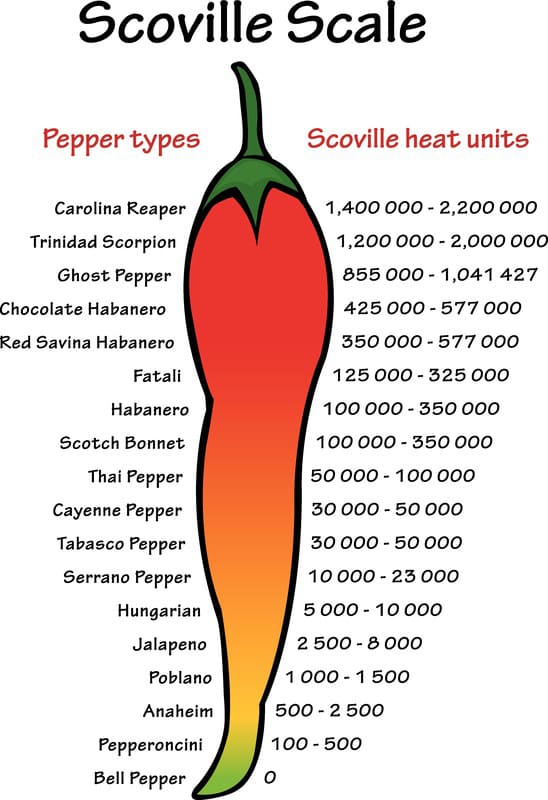
But here’s what most people don’t realize: heat and flavor aren’t mutually exclusive. In fact, some of the most complex and delicious peppers pack serious heat.
Think of the Scoville scale as a flavor intensity meter rather than just a heat gauge. Mild peppers like bell peppers and banana peppers offer zero to 4,000 Scoville Heat Units (SHU) with sweet, vegetal flavors.
Medium peppers like jalapeños and Fresno peppers range from 4,000 to 15,000 SHU and bring bright, grassy notes. Hot varieties like serranos and cayennes deliver 15,000 to 50,000 SHU with sharp, clean heat.
Very hot peppers such as Thai chilis and habaneros provide 50,000 to 100,000 SHU alongside tropical fruit flavors. Extremely hot varieties like ghost peppers and Carolina Reapers exceed 100,000 SHU while offering complex, often fruity or smoky characteristics.
The key is finding varieties that deliver flavor alongside their heat, rather than just burning for the sake of burning.
Setting Yourself Up for Success: The Growing Fundamentals
Growing flavorful peppers successfully starts long before you plant your first seed. After countless trial-and-error seasons, I’ve learned that peppers are quite particular about their growing conditions, but once you understand their needs, they’re incredibly rewarding.
Soil is the Foundation of Flavor
Peppers thrive in well-draining soil with a pH between 6.0 and 6.8. I learned this lesson the hard way when my first-year peppers produced bland, tough fruits in my heavy clay soil.
The following season, I amended my beds with compost and perlite, creating a loose, fertile growing medium. The difference in flavor was remarkable—the peppers were juicier, more aromatic, and significantly more flavorful.
For container growing, I use a mix of high-quality potting soil, compost, and perlite in a 2:1:1 ratio. The drainage is crucial because waterlogged peppers not only develop root rot but also produce watery, flavorless fruits.
Timing Your Season for Maximum Success
Peppers are warm-season crops that absolutely despise cold weather. I start my seeds indoors 8 to 10 weeks before the last expected frost date, keeping them on a heat mat at around 80°F for optimal germination. The extra warmth makes a huge difference—without it, germination can take weeks or fail entirely.
Here’s my seasonal timeline: I start seeds in late February for my zone 6 garden, transplant seedlings to larger pots in early April, and move them outside only after nighttime temperatures consistently stay above 55°F, usually in late May. This patience pays off tremendously in both plant health and fruit production.
Water Wisdom
Consistent moisture is critical for developing full, complex flavors in peppers. However, the watering technique matters as much as the frequency. I water deeply but less frequently, allowing the top inch of soil to dry between waterings. This encourages deep root development and concentrates flavors in the fruits.
During my second growing season, I noticed that erratic watering—alternating between drought stress and overwatering—produced peppers with inconsistent flavors and tough skins. Now I use soaker hoses and mulch heavily to maintain consistent soil moisture.
Feeding for Flavor
Peppers are moderate feeders, but the type of fertilizer significantly affects flavor development. Early in the season, I use a balanced fertilizer to encourage healthy growth. Once flowering begins, I switch to a lower-nitrogen, higher-phosphorus fertilizer to promote fruit development rather than excessive foliage.
I’ve experimented with various organic amendments and found that compost tea applied every two weeks during the growing season produces the most flavorful peppers. The slow-release nutrients seem to enhance the complex flavors that make homegrown peppers so superior to store-bought varieties.
The Gateway Varieties: Building Your Heat Tolerance
Jalapeños – Where Every Pepper Journey Should Begin
Jalapeños are the perfect introduction to the world of flavorful hot peppers. At 2,500 to 8,000 SHU, they provide enough heat to be interesting without overwhelming your palate. But what makes jalapeños truly special is their flavor evolution throughout the growing season.
I remember the first time I harvested a perfectly ripe red jalapeño from my plant. Most people only know them in their green stage, but when allowed to ripen to red, they develop an almost candy-like sweetness that pairs beautifully with their moderate heat.
The green ones offer that classic bright, grassy flavor with a sharp bite, while the red ones become sweeter and more complex.
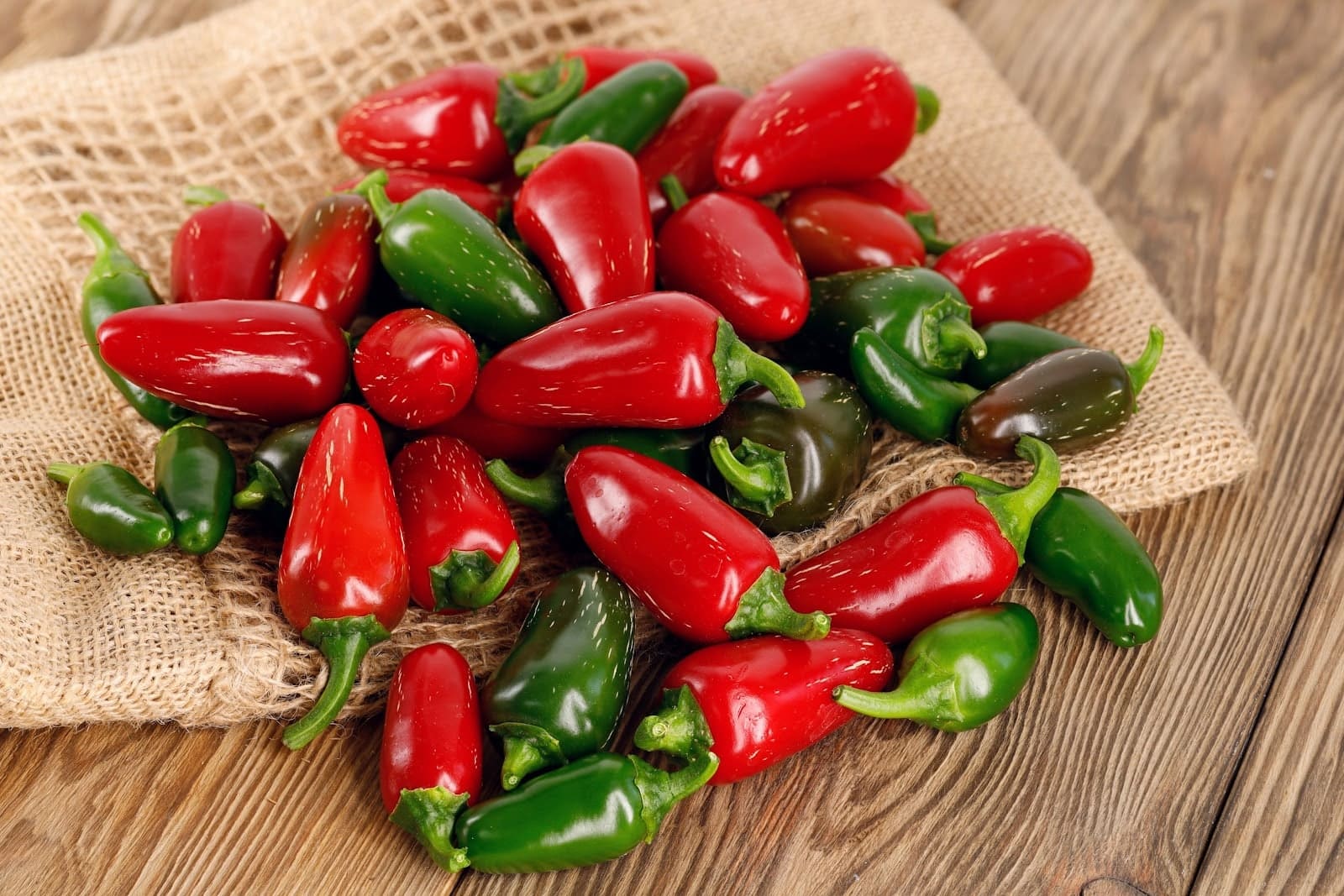
Jalapeños are also incredibly reliable producers in most climates and extremely versatile in the kitchen. I use them fresh in salsas, stuff them with cream cheese for poppers, pickle them for year-round enjoyment, and smoke the red ones to make my own chipotle peppers.
This single variety taught me that pepper growing isn’t just about heat—it’s about discovering the incredible range of flavors hidden within each fruit.
Poblanos – The Gentle Giants with Hidden Depths
Last summer, my neighbor Maria taught me the true magic of poblanos when she showed me how her grandmother made chiles rellenos. These large, heart-shaped peppers are like the gentle giants of the pepper world—mild enough for sensitive palates at 1,000 to 2,000 SHU but with enough earthy, complex flavor to be the star of any dish.
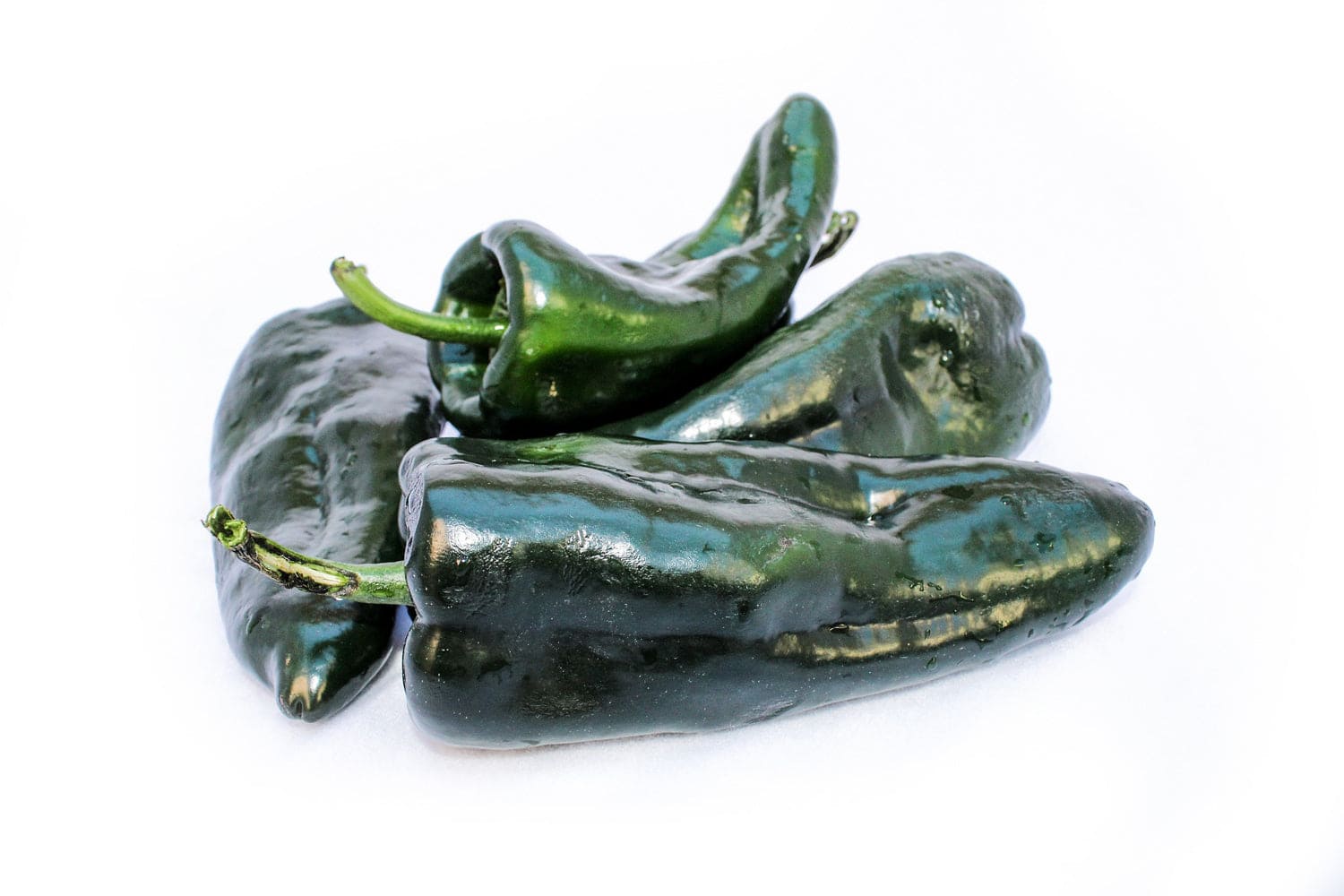
When you roast poblanos, something magical happens. The skin blisters and chars, and the flesh underneath becomes smoky and sweet with hints of chocolate and earth.
I’ve started roasting them in batches over an open flame on my grill, then freezing them in meal-sized portions. They add incredible depth to winter soups and stews, transforming simple dishes into something restaurant-worthy.
Poblanos are also forgiving for beginning gardeners. They produce large fruits consistently and can handle slightly cooler temperatures better than their hotter cousins. The plants are sturdy and productive, often yielding 20 or more large peppers per plant in good conditions.
Hatch Green Chiles – New Mexico’s Gift to Flavor
No discussion of flavorful mild peppers would be complete without mentioning Hatch green chiles. At 1,000 to 8,000 SHU, these elongated beauties from New Mexico’s Hatch Valley possess an almost mystical quality among pepper enthusiasts.
There’s something about the unique growing conditions—the high desert climate, mineral-rich soil, and traditional farming methods—that creates peppers with unmatched depth and complexity.
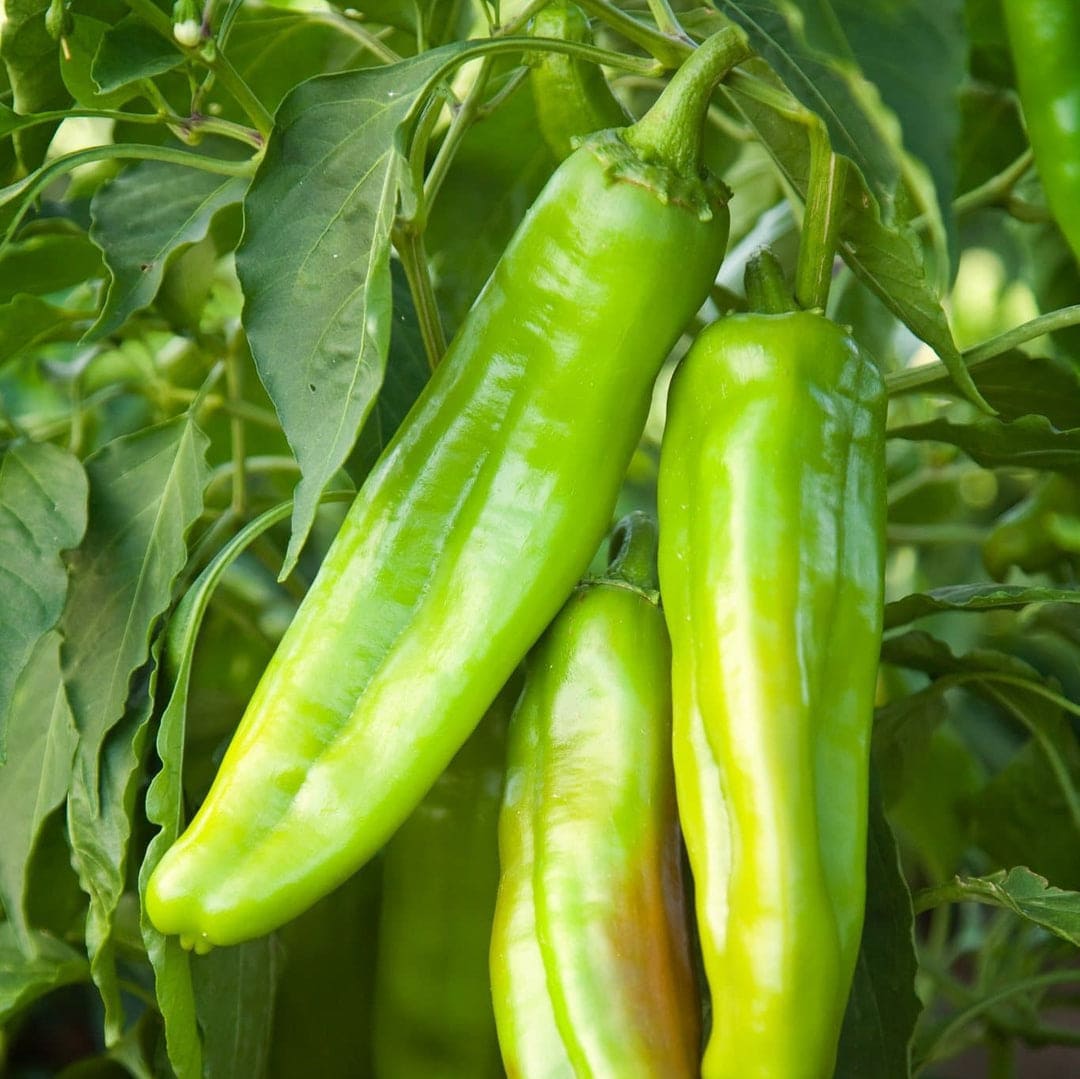
The first time I roasted fresh Hatch chiles, the aroma alone was intoxicating. They develop this incredible smoky, earthy sweetness when roasted that’s both comforting and exotic. Unlike their California cousin, the Anaheim pepper, true Hatch chiles have a more robust flavor profile with hints of grass, earth, and sunshine all wrapped into one perfect package.
What makes Hatch chiles particularly special is their seasonal nature. They’re harvested in late summer, and many New Mexican communities hold chile roasting festivals where the air fills with the scent of roasting chiles. I now order mine fresh during harvest season and roast them in large batches for freezing.
Shishito Peppers – The Gentle Japanese Surprise
Shishito peppers have become one of my absolute favorite mild varieties, and they’ve taught me that not all pepper excitement comes from heat. At just 50 to 200 SHU, these slender Japanese peppers are mostly mild, but here’s the fun part—about one in ten packs a surprising punch that can reach 1,000 SHU.
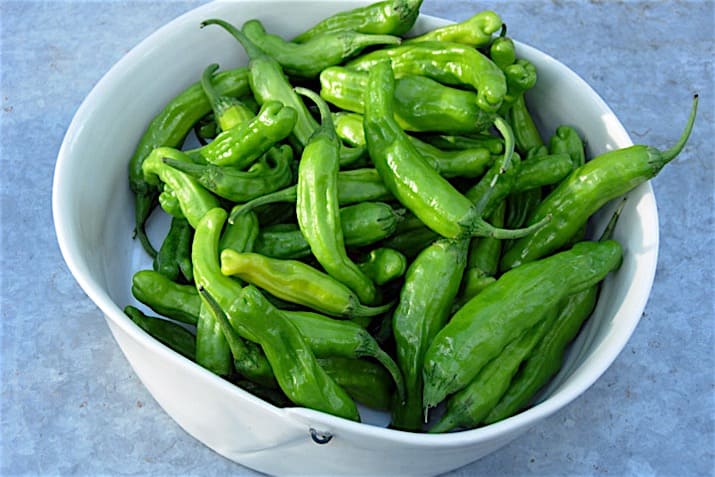
The flavor is what keeps me coming back. Shishitos have this unique sweet, slightly bitter taste with hints of citrus that becomes absolutely magical when blistered in a hot pan with just a touch of oil. I discovered them at a Japanese restaurant where they arrived simply prepared with just a sprinkle of sea salt, and I knew I had to grow them myself.
What I love about shishitos is their social aspect. When I serve them as appetizers, there’s this fun element of surprise as people wonder if they’ll get a mild one or hit the spicy lottery. They’re incredibly productive plants, often producing 50 or more peppers, and they continue producing right up until frost.
Cubanelle Peppers – The Sweet Italian Frying Pepper
Cubanelle peppers have earned a permanent place in my garden for their incredible sweet flavor and versatility. At 0 to 1,000 SHU, they’re technically mild, but what they lack in heat, they more than make up for in pure, sweet pepper flavor.
These light green, elongated peppers are often called Italian frying peppers, and for good reason. When sautéed with olive oil and garlic, they develop this incredibly sweet, almost candy-like quality that pairs beautifully with Italian sausages and pasta dishes.
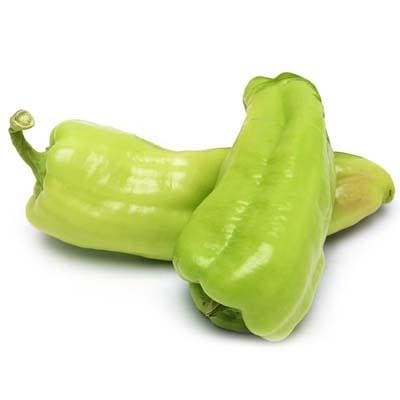
The walls are thin, which makes them perfect for quick cooking methods where you want the pepper to soften and sweeten rapidly.
I started growing Cubanelles after watching my Italian neighbor prepare them for his weekly Sunday sauce. He would fry them until they were golden and sweet, then add them to his simmering tomato sauce. The transformation was remarkable—these humble peppers added a sweetness and depth that elevated the entire dish.
Banana Peppers – The Versatile Crowd Pleasers
Don’t let their mild nature fool you—banana peppers are flavor powerhouses. At just 0 to 500 SHU, they have this bright, tangy-sweet character that makes them incredibly versatile. I like to think of them as the golden retrievers of the pepper world: friendly, approachable, and loved by almost everyone.
What I love most about banana peppers is their incredible productivity. A single plant can produce dozens of peppers throughout the season, and they keep producing until the first frost. They’re perfect for fresh eating, adding a sweet crunch to salads and sandwiches, and they pickle beautifully for long-term storage.
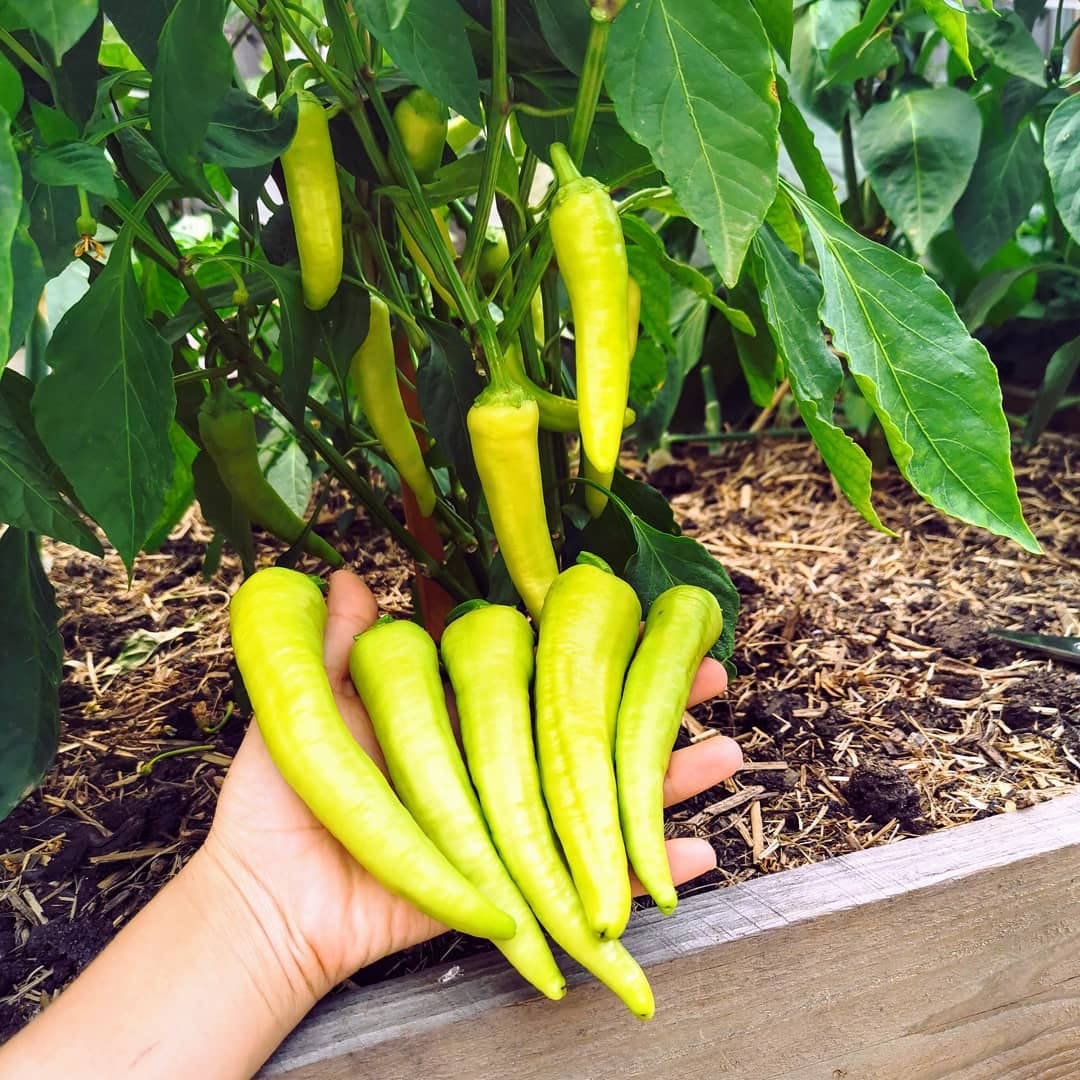
Anaheim Peppers – The California Classic
Anaheim peppers deserve recognition as one of the most versatile and flavorful mild varieties available. At 500 to 2,500 SHU, they offer just enough warmth to be interesting while remaining accessible to most palates. These elongated peppers were actually developed from New Mexico chile seeds brought to California in the early 1900s.
What sets Anaheims apart is their incredible versatility. They’re large enough for stuffing, mild enough for people sensitive to heat, and flavorful enough to be the star ingredient in countless dishes. When roasted, they develop a sweet, slightly smoky flavor that’s become synonymous with Southwestern cuisine.
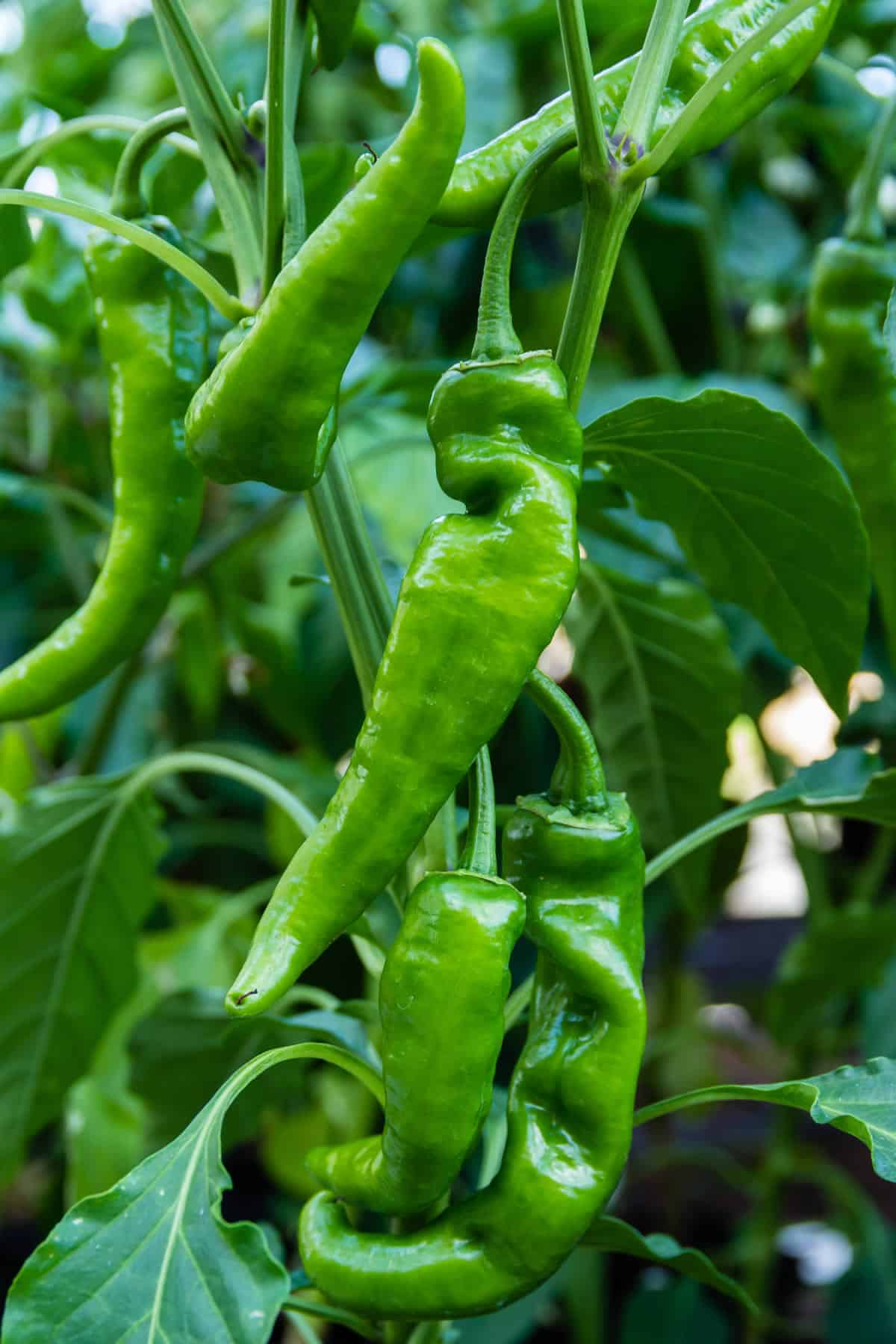
I use Anaheims constantly in my kitchen—they’re perfect for making chile rellenos, adding to breakfast burritos, or simply roasting and eating with a sprinkle of salt. They’re also one of the most forgiving peppers for beginning gardeners, producing reliably in most climates and continuing to produce throughout the growing season.
Hungarian Wax Peppers – The Variable Heat Champions
Hungarian wax peppers have taught me to expect the unexpected. These beautiful yellow peppers can range from 1,500 to 15,000 SHU, which means you never quite know what you’re getting until you take that first bite. This variability might sound frustrating, but it’s actually part of their charm.
The flavor is consistently excellent regardless of heat level—bright, sweet, and slightly tangy with a crisp texture that’s perfect for fresh eating. The yellow color adds beautiful visual appeal to dishes, and they’re excellent for pickling. I’ve learned to taste each pepper before using it in cooking so I can adjust other ingredients accordingly.
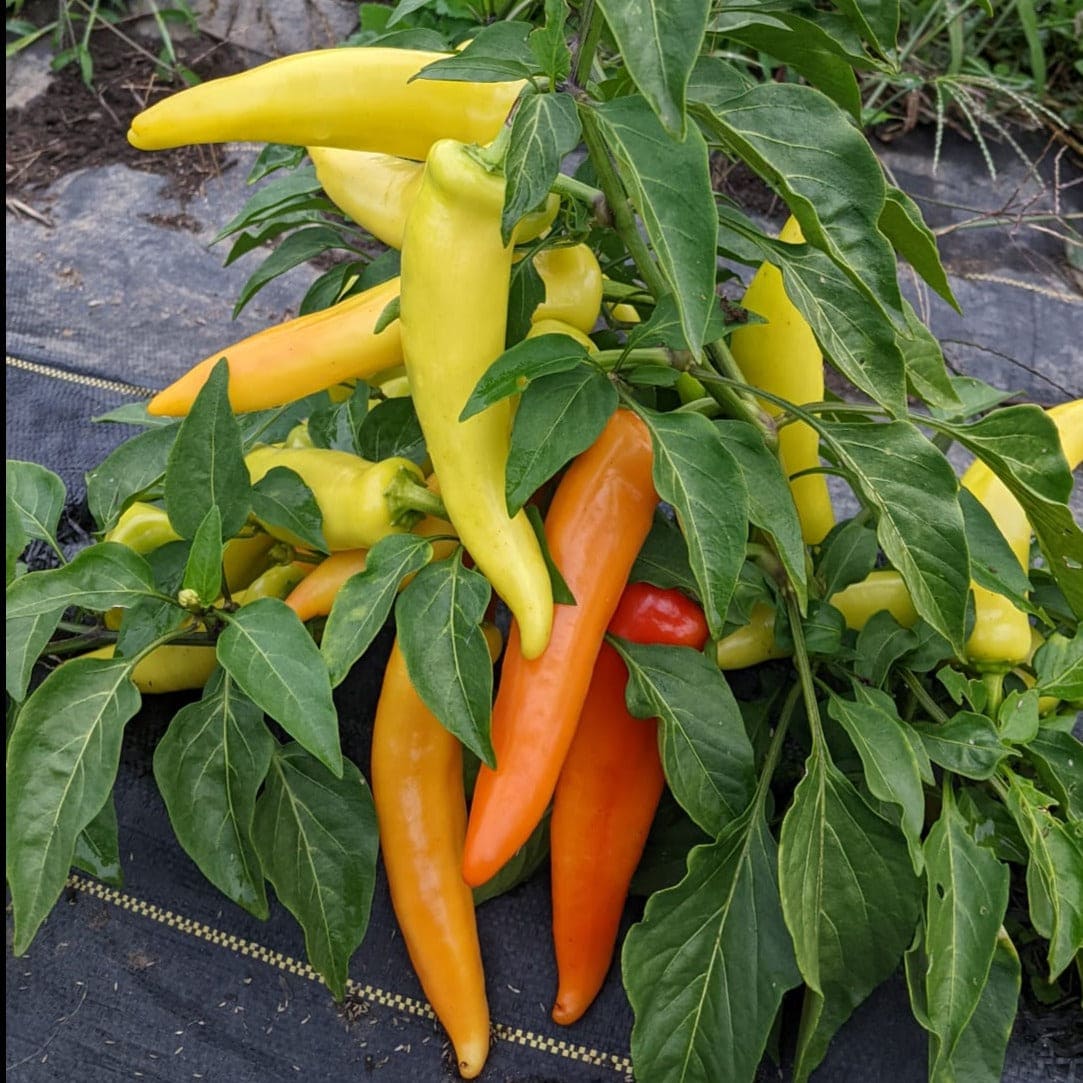
What I appreciate most about Hungarian wax peppers is how they’ve taught me to pay attention to growing conditions. Stressed plants tend to produce hotter peppers, while well-watered, consistently fed plants lean toward the milder side. This has made me a more attentive gardener overall.
Trinidad Perfume – The Heatless Habanero
Trinidad Perfume peppers have shown me that you can have all the incredible flavor of a chinense pepper without any heat whatsoever. At 0 to 500 SHU, these peppers taste exactly like habaneros minus the fire, making them perfect for people who love pepper flavor but can’t handle the heat.
The flavor is intensely fruity and aromatic—everything that makes habaneros special from a taste perspective, but accessible to anyone regardless of heat tolerance. I use them to add that distinctive chinense flavor to dishes where heat would be unwelcome, like fruit salsas and delicate sauces.
They look almost identical to habaneros, which makes them perfect for playing gentle pranks on friends who expect heat but get pure flavor instead. The plants are productive and the peppers are versatile, working beautifully in both fresh and cooked applications.
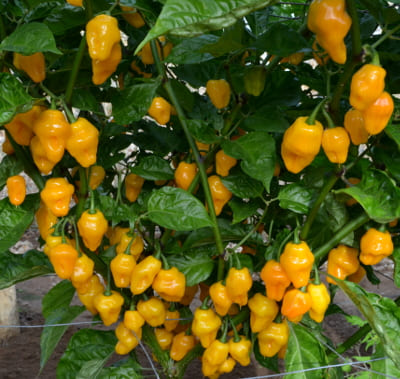
Fresno Peppers – The Sophisticated Cousin
Fresno peppers are like jalapeños’ more sophisticated cousin. At 2,500 to 10,000 SHU, they’re in a similar heat range, but their flavor profile is distinctly different. When fully ripe to their bright red color, Fresnos develop a fruity sweetness with subtle smoky undertones that make them incredibly appealing.
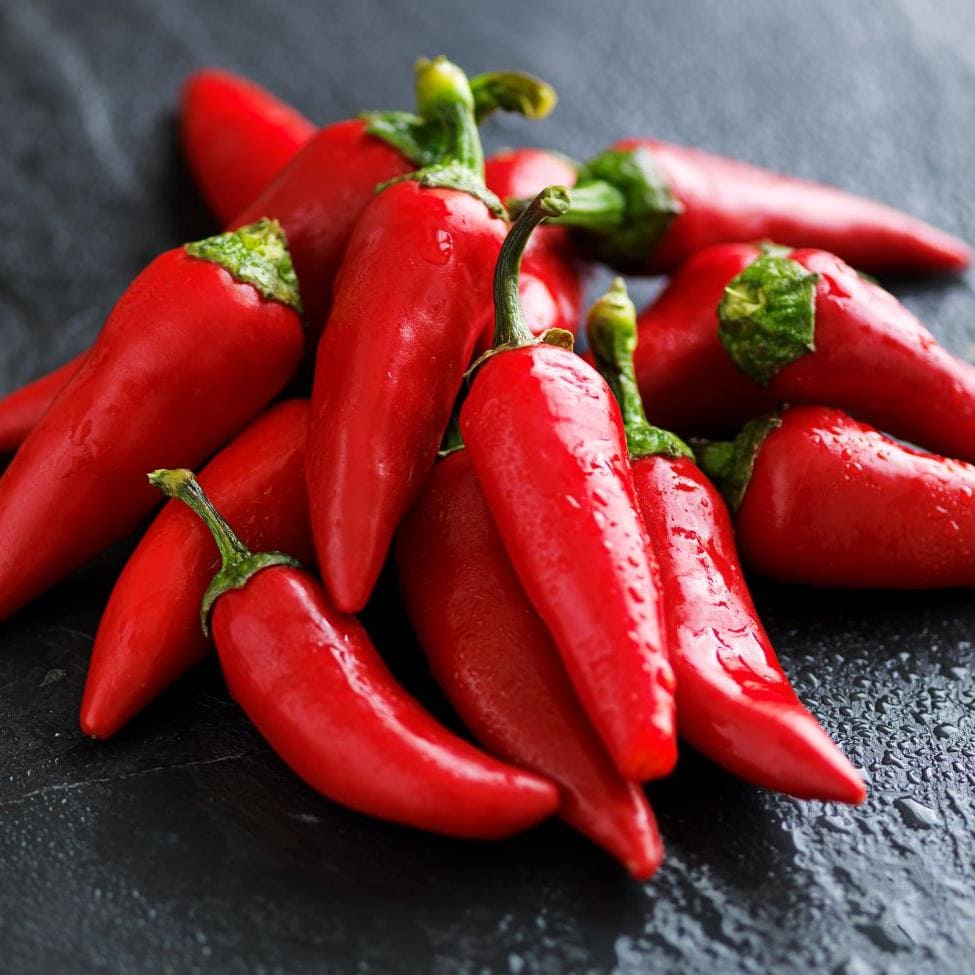
I use Fresnos when I want the heat and presence of a jalapeño but with more complexity. They’re excellent in fresh salsas where their fruit-forward flavor really shines, and they make beautiful pickled peppers with their vibrant red color.
Chipotle (Smoked Jalapeños) – Smoke and Fire United
While technically not a separate variety, chipotle peppers deserve special recognition for what they teach us about flavor development. These are simply jalapeños that have been allowed to ripen to red and then slowly smoked and dried, but the transformation is remarkable.
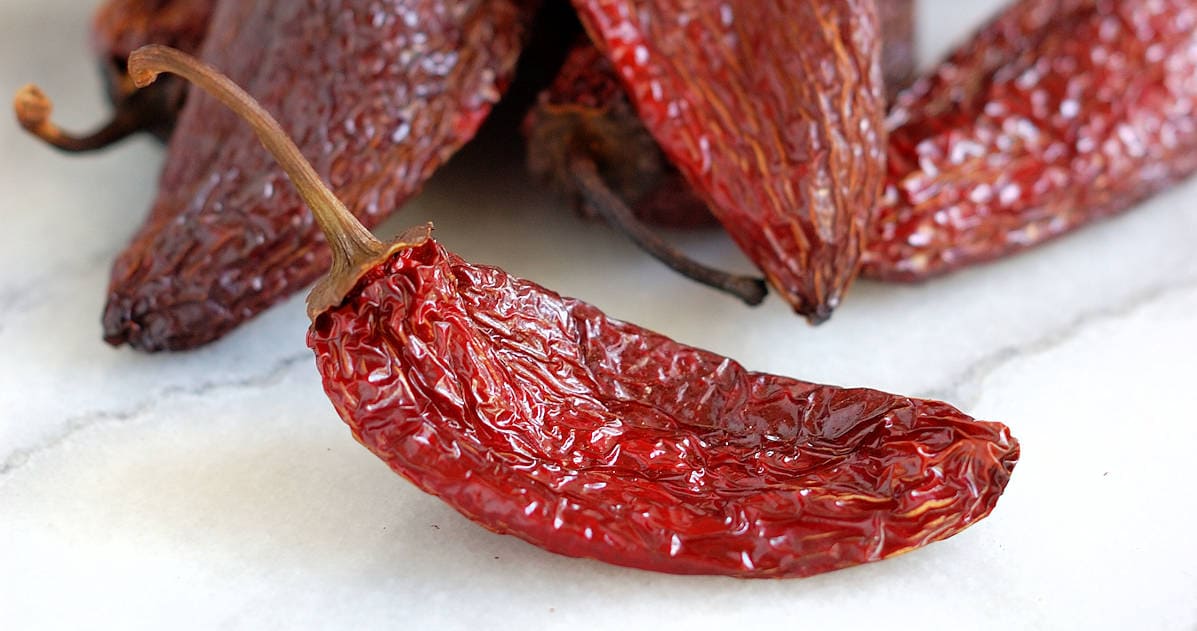
The smoking process creates this incredible depth of flavor—sweet, smoky, and complex with just the right amount of heat at 2,500 to 10,000 SHU. Making my own chipotles has become one of my favorite pepper projects. I let red jalapeños dry slightly on the plant, then smoke them slowly over apple or cherry wood until they’re completely dehydrated.
The flavor difference between homemade and store-bought chipotles is astounding. Homemade versions have this bright smokiness and complex pepper flavor that elevates everything from barbecue sauces to chocolate desserts.
Stepping Up the Heat: Medium Varieties with Serious Flavor
Serranos – Small Peppers, Big Personality
Serranos taught me that size doesn’t determine flavor intensity. These slender peppers, typically only 1 to 2 inches long, pack more heat than jalapeños at 10,000 to 25,000 SHU, but what sets them apart is their bright, clean flavor profile.
Unlike the grassy notes of jalapeños, serranos have a sharp, almost citrusy quality that cuts through rich foods beautifully. I discovered this when I started making fresh pico de gallo—serranos provide just the right amount of heat and brightness without overwhelming the tomatoes and onions.
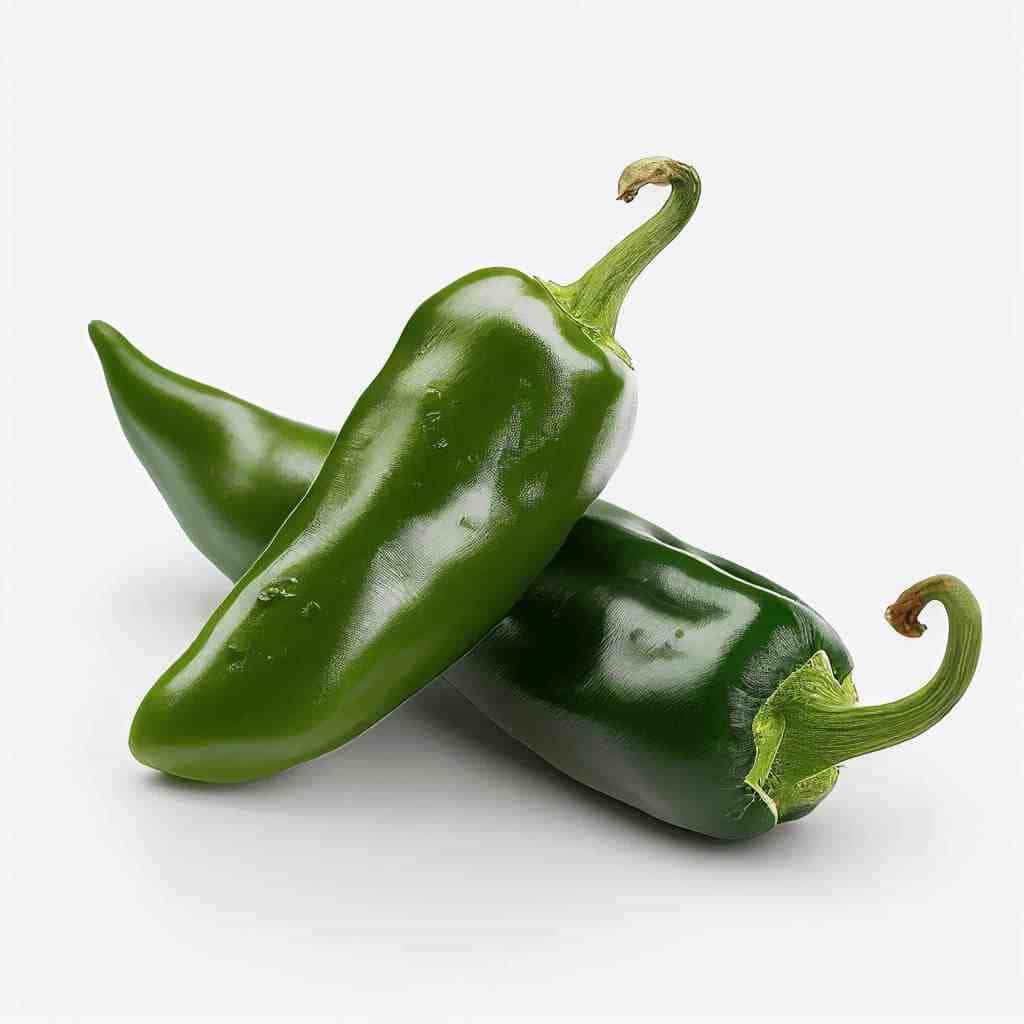
The smaller the serrano, the hotter it tends to be, which makes harvest timing crucial for controlling heat levels. I pick them at various sizes throughout the season, using the smaller ones for maximum heat and the larger ones when I want more pepper flavor with moderate heat.
Sugar Rush Peach – The Sweet Heat Marvel
Sugar Rush Peach peppers have revolutionized my understanding of how sweet and hot can coexist beautifully. At 25,000 to 50,000 SHU, they’re not extremely hot, but their flavor is so unique and appealing that they deserve a place in every pepper lover’s garden.
The name perfectly describes the experience—there’s this incredible peachy sweetness that hits first, followed by a gentle but persistent heat that builds beautifully.
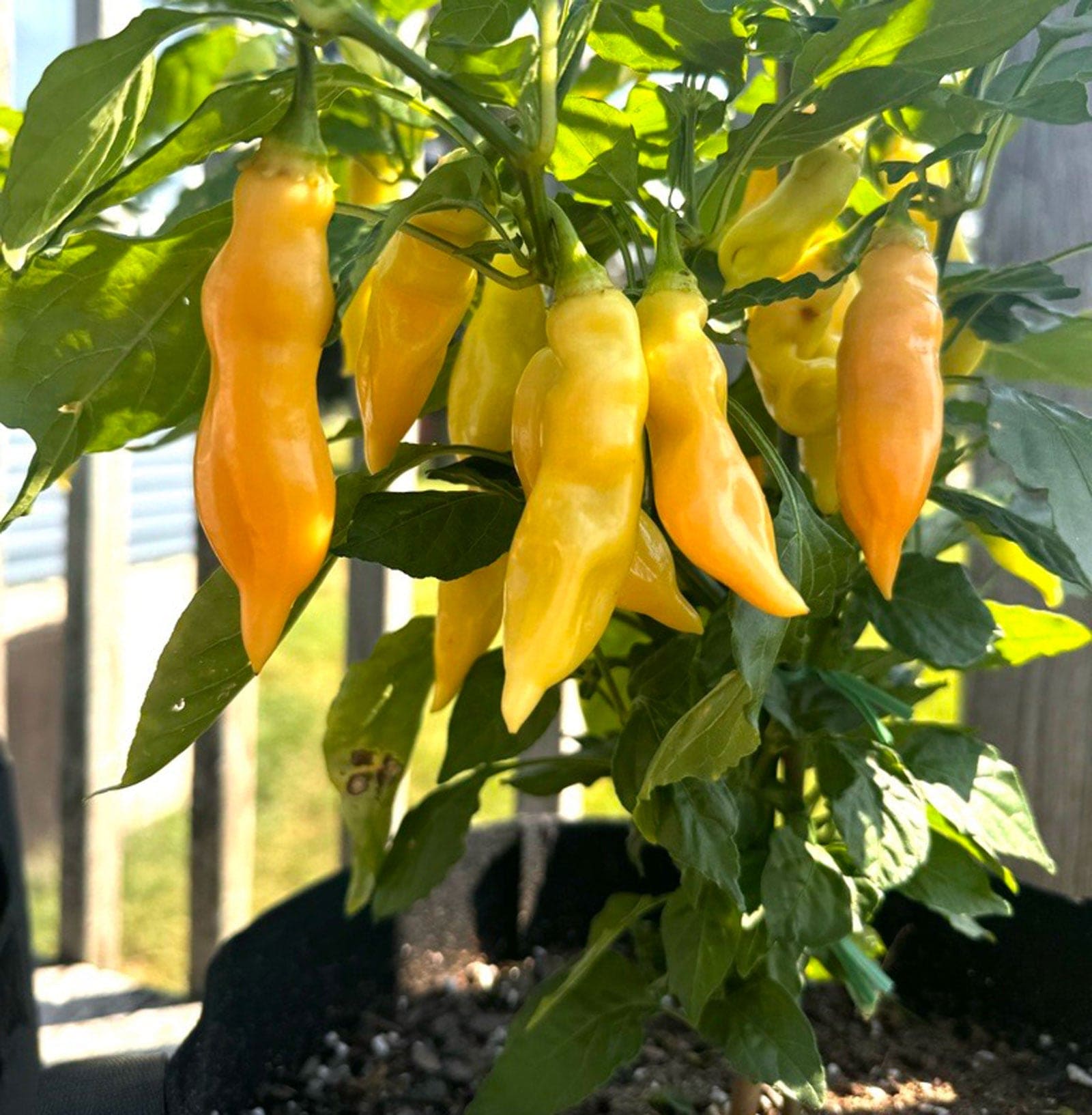
The flavor is so fruit-forward that they’re actually enjoyable to eat fresh, despite their substantial heat. I often serve them to guests who are surprised by how something so hot can taste so much like actual fruit.
The plants are incredibly productive, producing dozens of small, peach-colored peppers that look almost too pretty to eat. I use them in fruit salsas where their natural sweetness complements other fruits while adding that perfect kick of heat.
Lemon Drop (Ají Limón) – Citrus Perfection
Lemon Drop peppers, also known as Ají Limón, are the perfect example of how the right pepper can transport you to another place entirely. At 30,000 to 50,000 SHU, they provide substantial heat, but it’s their incredible lemony flavor that makes them truly special.
The flavor is so intensely citrusy that they taste more like a spicy lemon than a traditional pepper. There’s this bright, clean quality with hints of lemongrass and citrus zest that makes them perfect for Southeast Asian-inspired dishes and anywhere you want to add heat with a citrus twist.
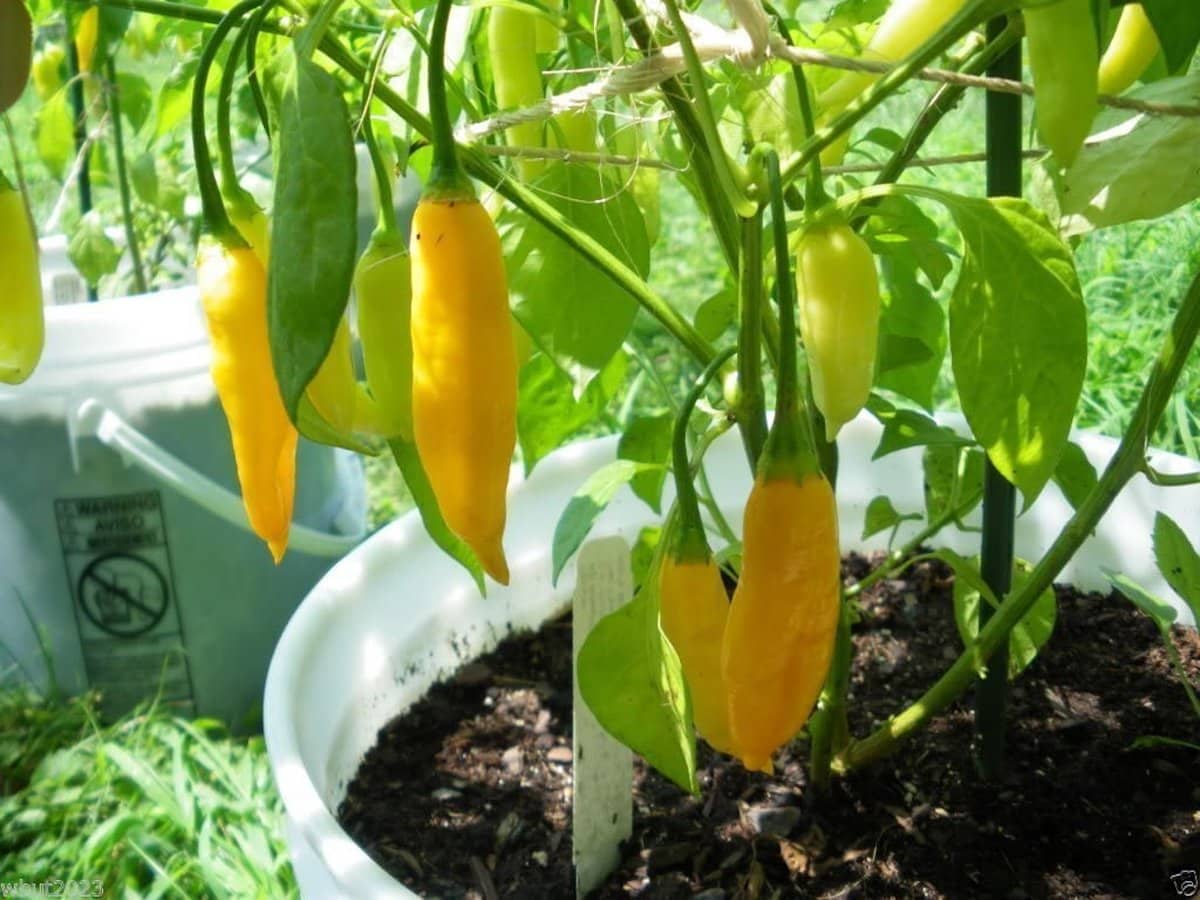
I discovered lemon drops through Peruvian cuisine, where they’re highly prized for their unique character. They’re perfect for ceviches and fish dishes where their citrus quality enhances rather than competes with delicate flavors. The plants are prolific producers, often yielding 50 or more bright yellow peppers per plant.
Ají Charapita – The Tiny Flavor Bomb
Ají Charapita peppers have taught me that sometimes the best things come in very small packages. These tiny peppers, often called the world’s smallest hot pepper, pack an incredible amount of flavor into their pea-sized fruits at 30,000 to 50,000 SHU.
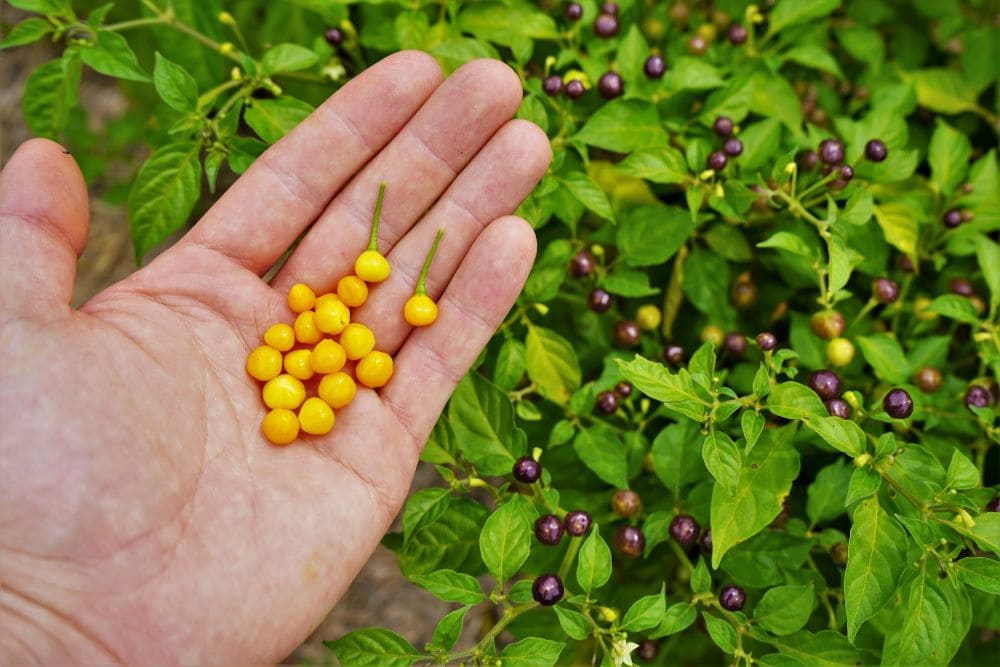
The flavor is intensely tropical and fruity, with a complexity that’s remarkable for such a small pepper. There’s this incredible aromatic quality—just crushing one between your fingers fills the air with this amazing tropical fruit scent. The heat is substantial but not overwhelming, and it builds slowly, allowing you to appreciate the complex flavors.
What makes charapitas particularly valuable is their incredible productivity. A single plant can produce hundreds of these tiny peppers, and they dry beautifully to create the most aromatic pepper flakes I’ve ever experienced. In Peru, they’re considered one of the finest peppers available and command premium prices.
Ají Amarillo – The Peruvian Flavor King
Ají Amarillo holds a special place in my heart as one of the most flavorful peppers I’ve ever grown. At 30,000 to 50,000 SHU, they’re not superhot, but their flavor is so distinctive and complex that they deserve recognition alongside much hotter varieties.
These bright orange peppers are the backbone of Peruvian cuisine, and once you taste them, you understand why. The flavor is fruity and bright with this unique quality that’s simultaneously sweet and earthy. There’s a depth to ají amarillo that makes it perfect for complex sauces and traditional dishes like ají de gallina.
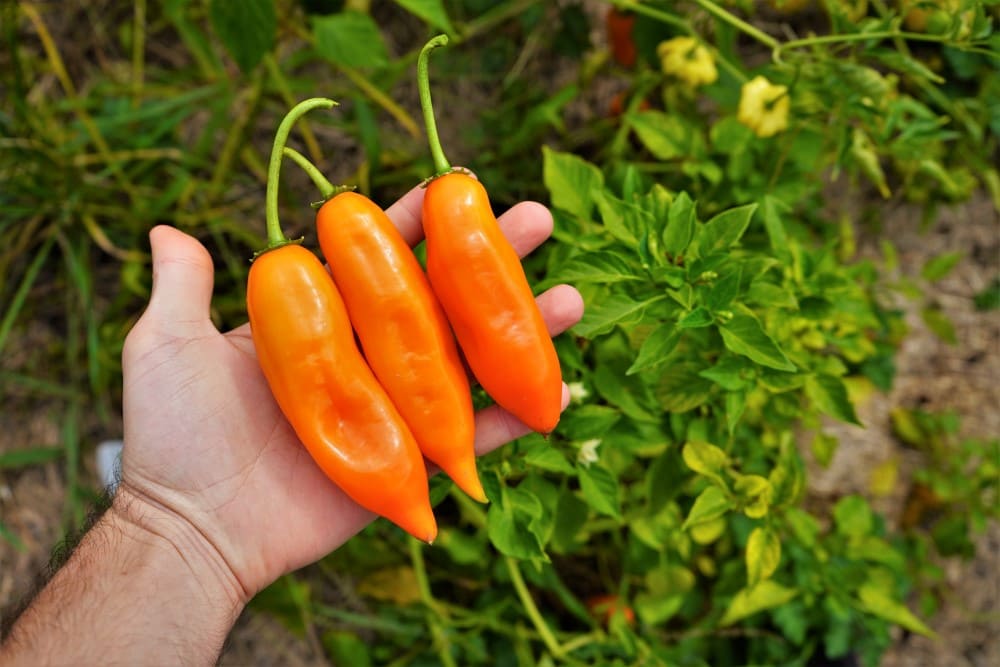
What makes ají amarillo particularly special is how the flavor develops differently when used fresh versus dried. Fresh peppers have this bright, almost tropical quality, while dried and rehydrated peppers develop deeper, more complex flavors that are essential for authentic Peruvian cuisine.
Cayenne Peppers – The Classic Heat Builder
Cayenne peppers have earned their place as one of the most recognizable hot peppers in the world, and for good reason. At 30,000 to 50,000 SHU, they deliver serious heat with a clean, straightforward pepper flavor that doesn’t compete with other ingredients.
What I love about cayennes is their versatility in both fresh and dried forms. Fresh cayennes have this bright, sharp heat that’s perfect for adding fire to stir-fries and fresh sauces.
When dried and ground, they become the familiar red pepper flakes that grace pizza tables everywhere. The heat is direct and honest—no fruit notes or complexity, just pure, clean pepper heat.
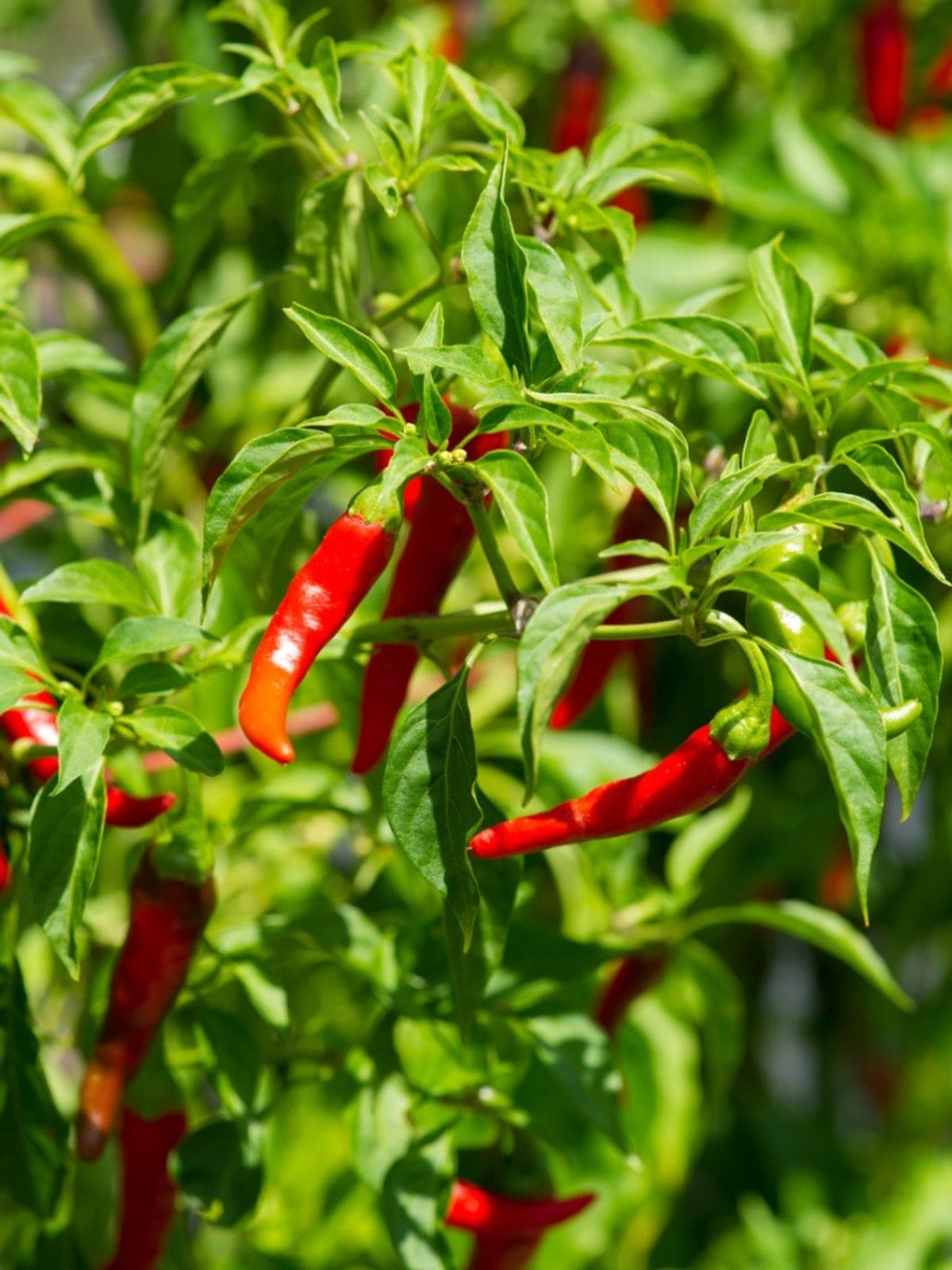
I grow several cayenne plants specifically for drying. There’s something deeply satisfying about hanging strings of bright red cayennes in my kitchen, knowing I’ll have homemade pepper flakes all winter long.
The flavor of homemade cayenne powder is remarkably superior to store-bought versions, with a freshness and intensity that reminds you why people have prized this pepper for centuries.
Chile de Árbol – The Mexican Flavor Champion
Chile de árbol has become one of my absolute favorite medium-heat peppers, and I wish more gardeners knew about them. At 15,000 to 30,000 SHU, they provide substantial heat, but it’s the flavor that makes them truly special. These slender red peppers have this incredible smoky, nutty quality that tastes like it’s already been enhanced by wood smoke.
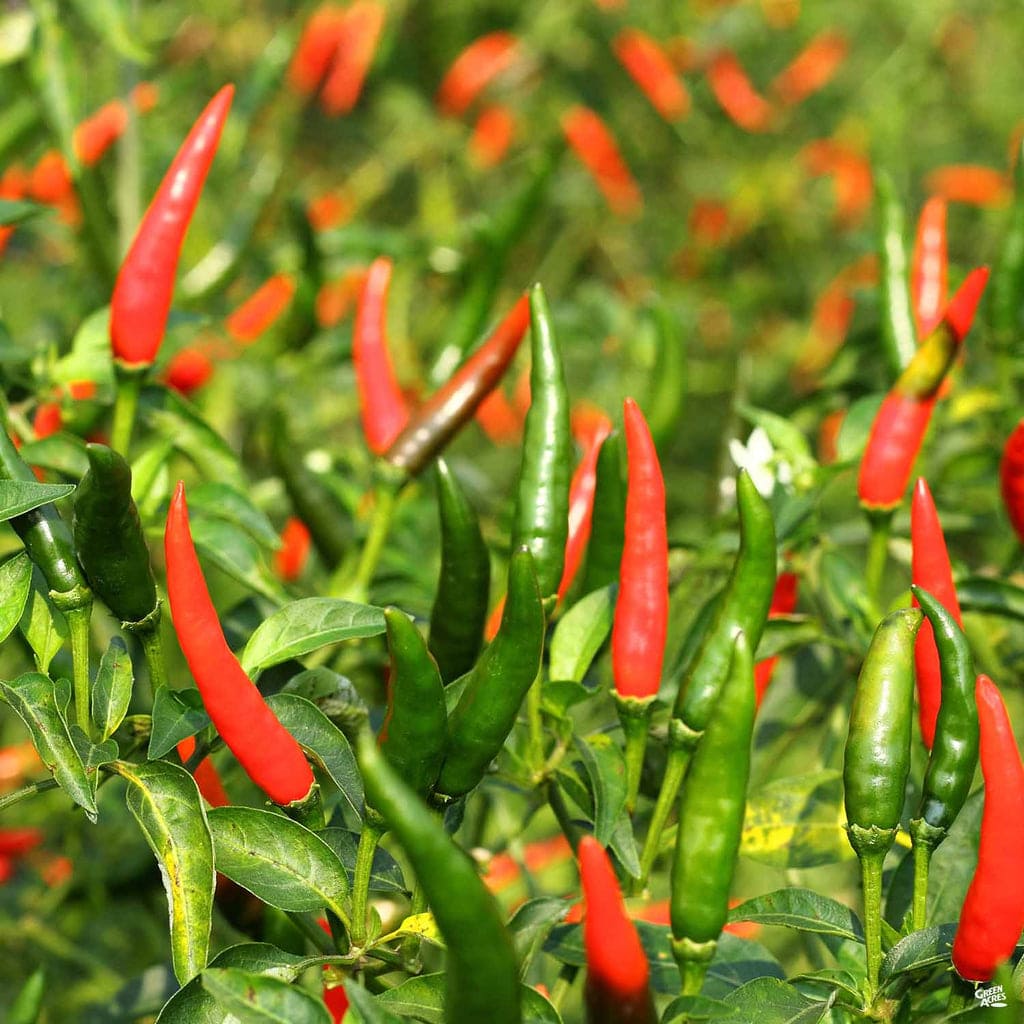
I discovered chile de árbol through Mexican cuisine, where they’re often used both fresh and dried. The dried versions are particularly special—they develop this deep, complex flavor that’s simultaneously smoky, nutty, and slightly sweet. When I grind them into flakes, they create the most aromatic pepper powder I’ve ever experienced.
What makes chile de árbol particularly valuable is their all-around flexibility. They work beautifully in hot sauces, add incredible depth to chili and stews, and create amazing spice blends. The plants are productive and the peppers dry easily, making them perfect for gardeners who want to preserve their harvest.
Tabasco Peppers – The Juicy Fire Bombs
Tabasco peppers are unlike any other pepper in my garden. At 30,000 to 50,000 SHU, they pack serious heat, but what sets them apart is their incredible juiciness. These small, torpedo-shaped peppers are literally bursting with flavorful juice when you bite into them.
The flavor is bright and acidic with a sharp, clean heat that builds quickly. I learned to appreciate tabasco peppers by making my own version of the famous sauce—the peppers are fermented with salt, which develops this incredible complexity of flavor.
The fresh peppers have this immediate, bright heat that’s perfect for adding to fresh salsas and marinades.
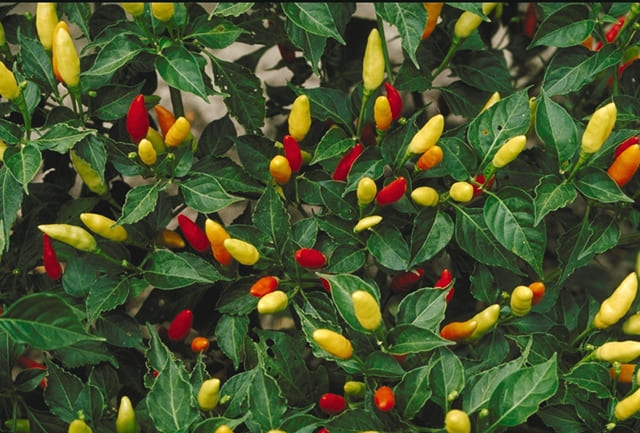
Growing tabasco peppers taught me patience. They take longer to ripen than most varieties, turning from green to yellow to orange before reaching their final bright red color. But that wait is worth it—the fully ripe red peppers have the most intense flavor and juice content.
Thai Bird’s Eye Chilis – Small Package, Explosive Flavor
Thai bird’s eye chilis have revolutionized my understanding of how much flavor can be packed into such a tiny pepper. At 50,000 to 100,000 SHU, they’re definitely moving into the “very hot” category, but their flavor is so distinctive and valuable that I consider them essential for any pepper enthusiast.
These tiny peppers, usually less than an inch long, have this incredible bright, clean heat with subtle fruity undertones. In Thai cuisine, they’re often used fresh, and just one small pepper can provide enough heat for an entire dish while adding this unique flavor that you simply can’t replicate with other varieties.
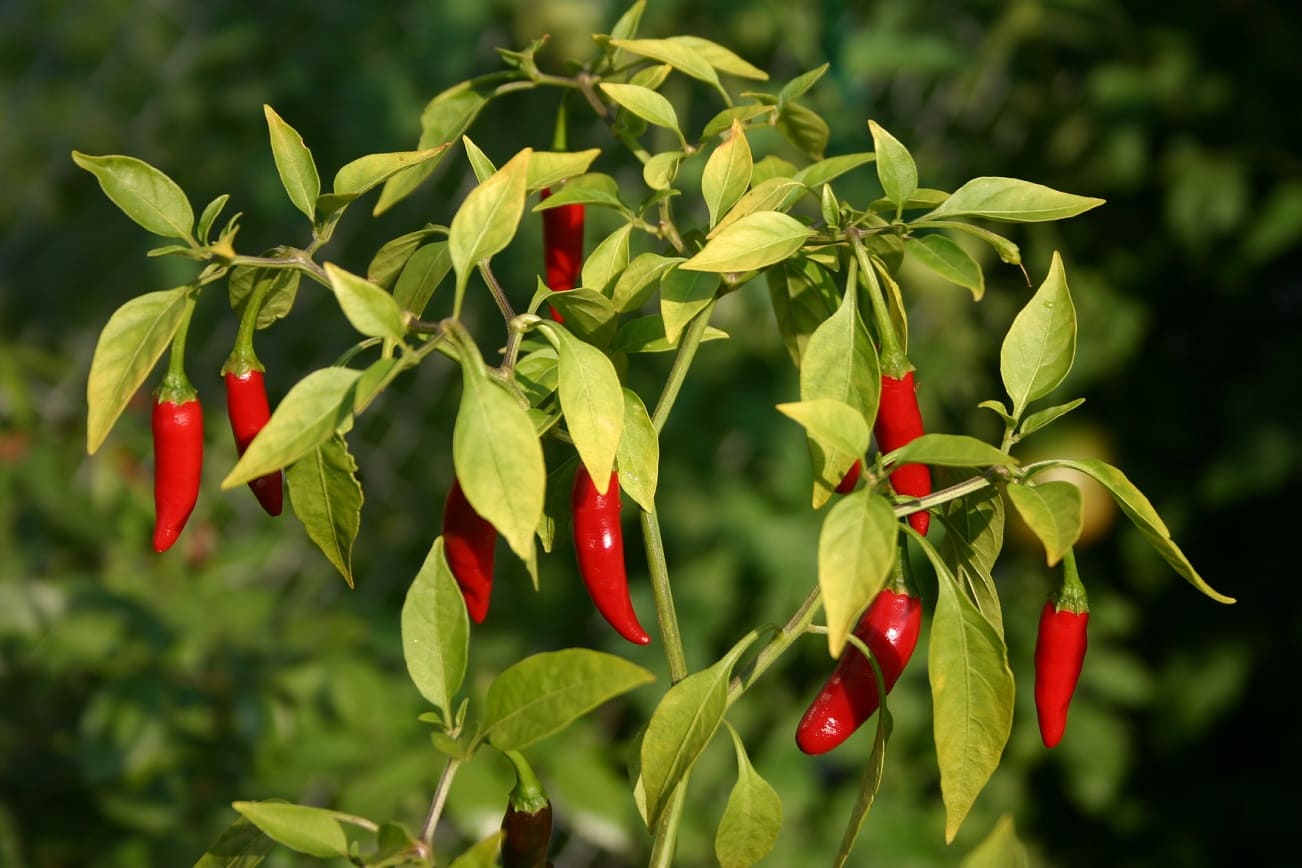
What amazes me about Thai chilis is their productivity. A single plant can produce hundreds of these tiny peppers, and they continue producing throughout the growing season. I’ve learned to harvest them at various stages—green for a sharper, more vegetal heat, and red for maximum fruity complexity.
Brazilian Starfish – The Unique Beauty
Brazilian starfish peppers are one of the most unusual and delicious varieties I’ve ever grown. At 5,000 to 30,000 SHU, they provide moderate heat, but it’s their incredible flavor and unique shape that make them special. These peppers are literally shaped like five-pointed stars, making them as ornamental as they are delicious.
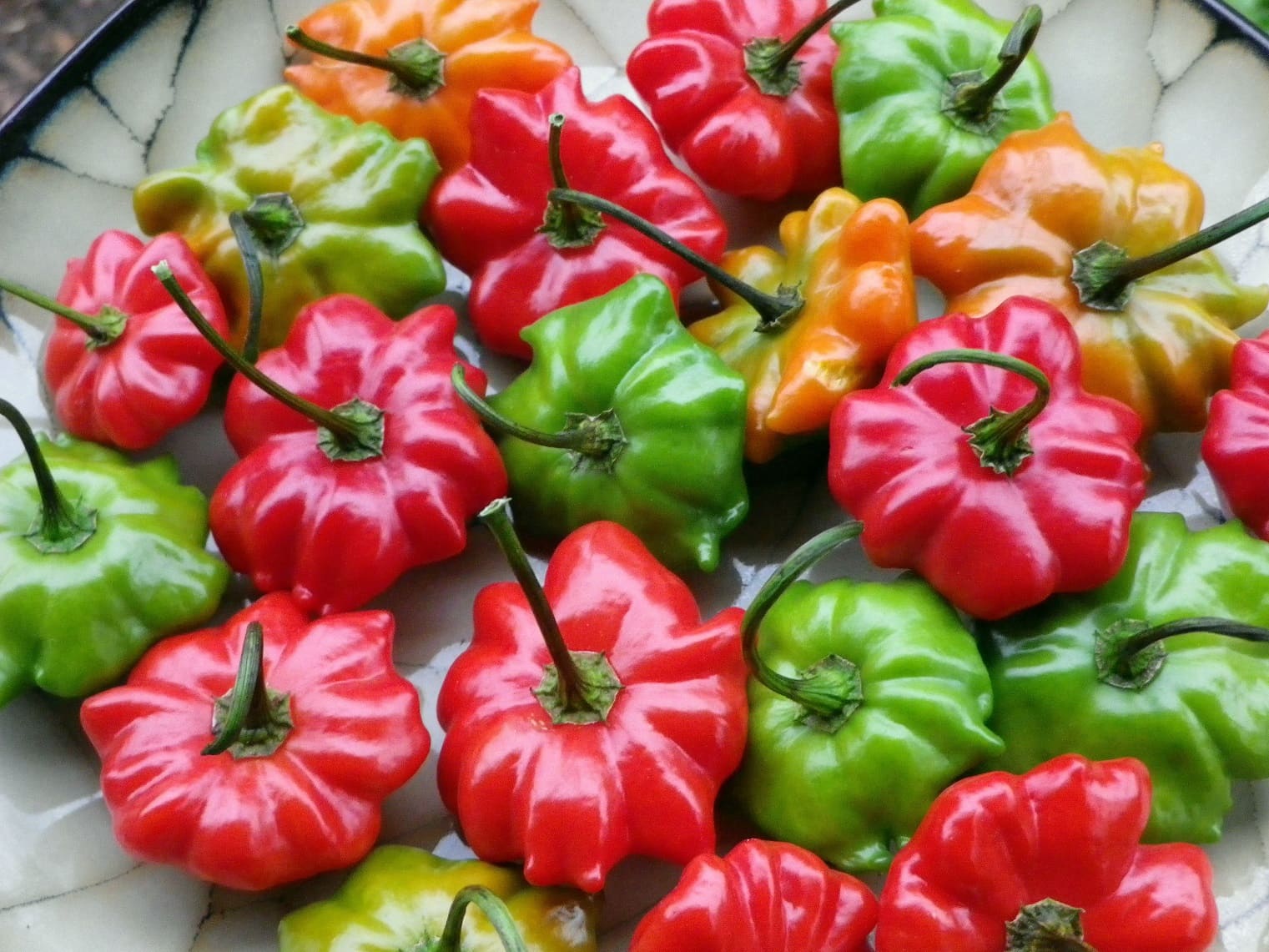
The flavor is remarkably sweet and fruity, almost like biting into a spicy berry. There’s very little of the vegetal quality that you find in many peppers—instead, these taste like they should be growing on a fruit tree rather than a pepper plant. The sweetness is so pronounced that they’re actually enjoyable to eat fresh, despite their moderate heat.
What makes Brazilian starfish particularly valuable for gardeners is their productivity and long harvest season. The plants produce dozens of these unique peppers, and they continue producing until frost. They’re also incredibly versatile—excellent fresh, perfect for unique salsas, and they make stunning garnishes for special dishes.
The Flavor Superstars: Where Heat Meets Extraordinary Taste
Habaneros – Tropical Fire in a Small Package
Here’s where things get interesting. Habaneros are like that friend who looks innocent but has hidden depths. At 100,000 to 350,000 SHU, they’re significantly hotter than anything we’ve discussed so far, but when I finally worked up the courage to try one (with plenty of milk standing by), I was stunned by the tropical fruit flavors that preceded the heat.
The flavor journey of a habanero is remarkable. The initial bite releases intense tropical fruit notes—mango, papaya, and citrus all come to mind. Then the heat builds gradually, creating this beautiful interplay between fruit sweetness and capsaicin fire. The heat is intense but manageable if you respect the pepper and use it sparingly.
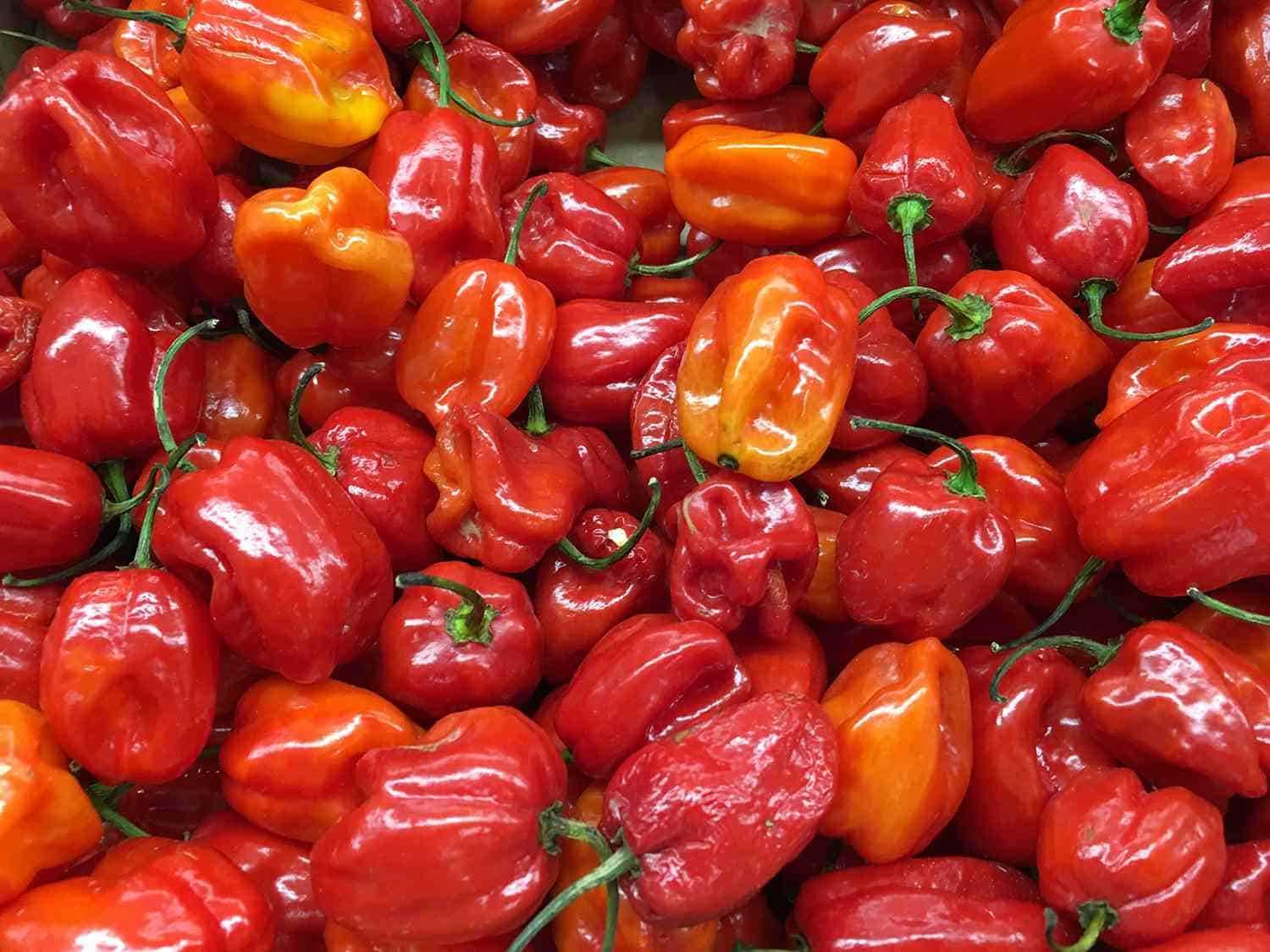
I’ve learned to use habaneros as a flavoring agent rather than a main ingredient. Even a quarter of one habanero can transform a whole batch of salsa into something transcendent. When making hot sauce, I combine them with fruits like mango or peach to complement their natural tropical character.
Scotch Bonnets – Caribbean Sunshine
If habaneros are tropical fruit, Scotch bonnets are Caribbean sunshine in pepper form. These wrinkly, colorful pods—they look like tiny tam o’shanter hats, hence the name—are sweeter and more aromatic than their habanero cousins at a similar heat level of 100,000 to 350,000 SHU.
I discovered Scotch bonnets through a Jamaican friend who insisted they were essential for authentic jerk seasoning. She was right—there’s something about their particular blend of sweet heat that you just can’t replicate with other peppers. They have this unique floral quality that seems to perfume whatever dish they’re added to.
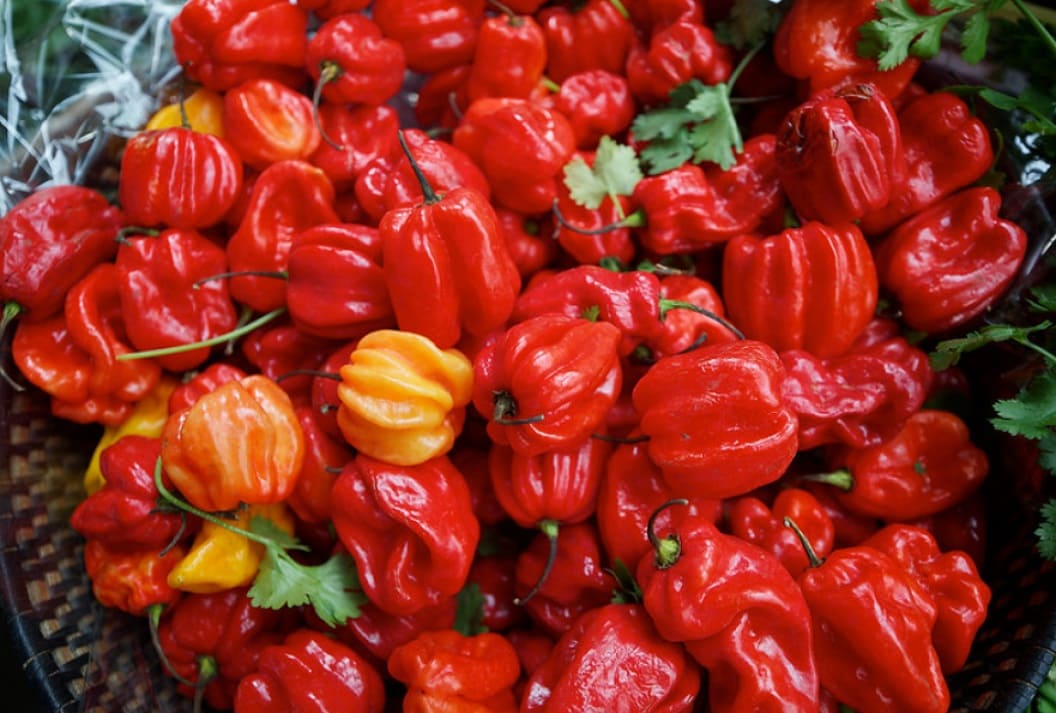
What makes Scotch bonnets special is their ability to add complex flavor without being one-dimensional. They bring sweetness, heat, and an almost perfume-like aroma that elevates Caribbean dishes to another level. When I use them in marinades, the meat absorbs these complex flavors in a way that transforms the entire dish.
Datil Peppers – Florida’s Hidden Gem
Datil peppers are one of those regional treasures that more gardeners should know about. Primarily grown around St. Augustine, Florida, these peppers offer habanero-level heat (100,000 to 300,000 SHU) but with a distinctly different flavor profile that’s sweeter and more complex.
What sets datils apart is their incredible sweetness combined with serious heat. They have this unique fruity quality that’s different from habaneros—more like a sweet citrus with hints of honey. The balance between sweet and heat is so perfect that they’re actually quite addictive.
I started growing datils after trying a local hot sauce during a visit to Florida. The pepper’s unique character was so compelling that I had to track down seeds. They’ve become one of my most requested varieties when I share peppers with friends—the combination of serious heat and incredible flavor makes them absolutely irresistible.
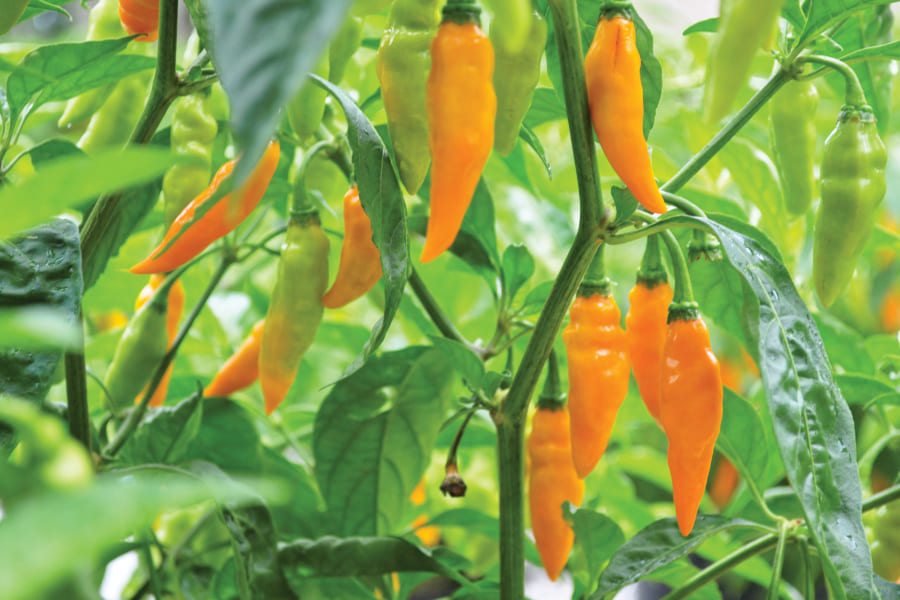
Fatalii Peppers – African Citrus Fire
Fatalii peppers from Africa have taught me that superhot peppers can have incredibly refined flavors. At 125,000 to 325,000 SHU, they pack serious heat, but their flavor is so distinctive and appealing that they’ve become one of my must-grow varieties.
The flavor is intensely citrusy—like biting into a lemon that’s been crossed with fire. There’s this bright, clean quality that’s completely different from the tropical fruit notes of habaneros. The citrus character is so pronounced that fataliis are perfect for making hot sauces that need bright acidity to balance rich foods.
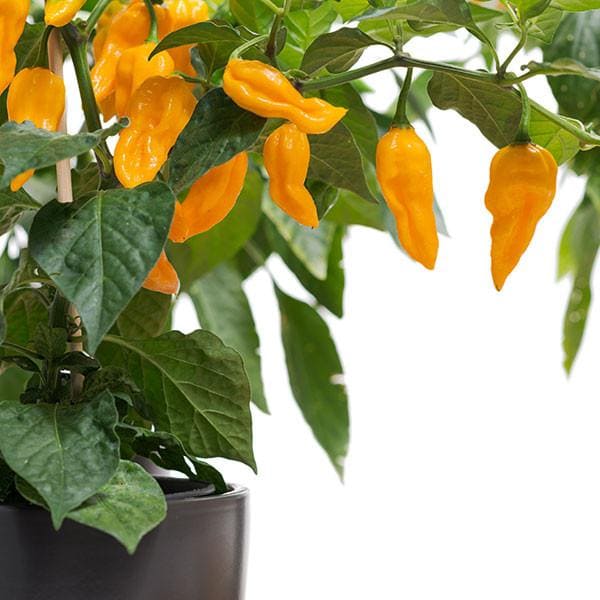
What I appreciate most about fataliis is how they maintain their distinctive flavor even when used in cooking. Many superhot peppers lose their unique characteristics when cooked, but fataliis retain that bright citrus quality that makes them perfect for marinades and sauces where you want the pepper flavor to shine through.
Rocoto Peppers – The Thick-Walled Wonders
Rocoto peppers are unlike any other pepper in my garden. At 50,000 to 250,000 SHU, they pack serious heat, but what makes them unique is their thick walls and apple-like texture. They’re the only peppers I grow that have black seeds, which makes them fascinating from a botanical perspective.
The flavor is incredibly complex—fruity and sweet like a habanero, but with this unique quality that’s almost apple-like in its crispness. They’re perfect for stuffing because of their thick walls, and in Peru and Bolivia, they’re often stuffed with meat and cheese to create incredible stuffed pepper dishes.
What I find most interesting about rocotos is how their heat builds differently than other peppers. Instead of the immediate burn of most hot varieties, rocotos have this delayed heat that builds slowly and lasts for a long time. The combination of their unique flavor and heat progression makes them one of the most distinctive peppers I grow.
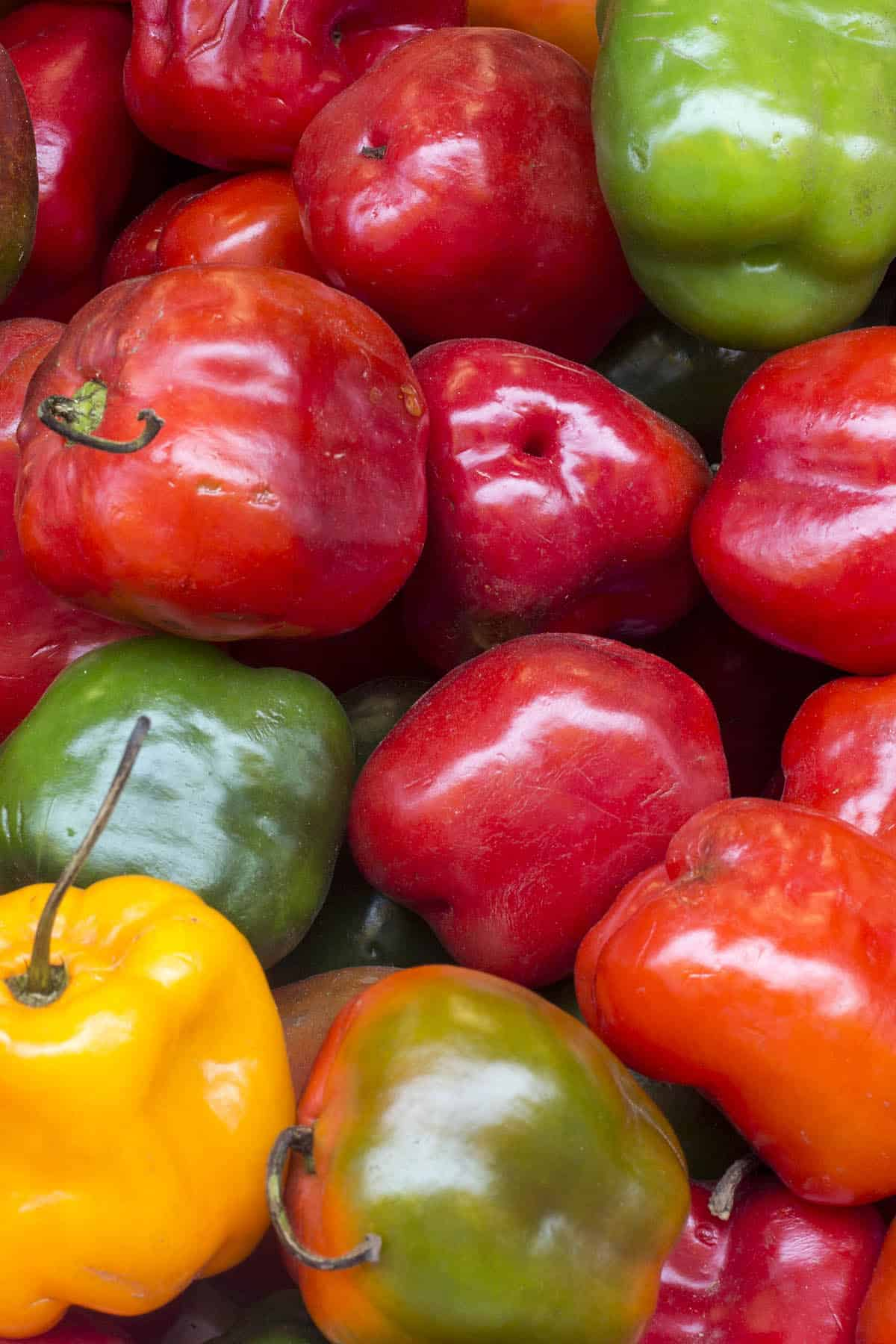
Sugar Rush Stripey – The Beautiful Heat
Sugar Rush Stripey peppers are relatively new to my garden, but they’ve quickly become one of my favorites for their incredible appearance and unique flavor. At 100,000+ SHU, they provide substantial heat, but it’s their striped appearance and complex flavor that make them special.
These peppers ripen to this amazing red color with lighter stripes that make them look almost like candy. The flavor is incredibly fruity and sweet, with a complexity that builds as you eat them. There’s this initial sweetness followed by fruity notes, then a heat that builds gradually without being overwhelming.
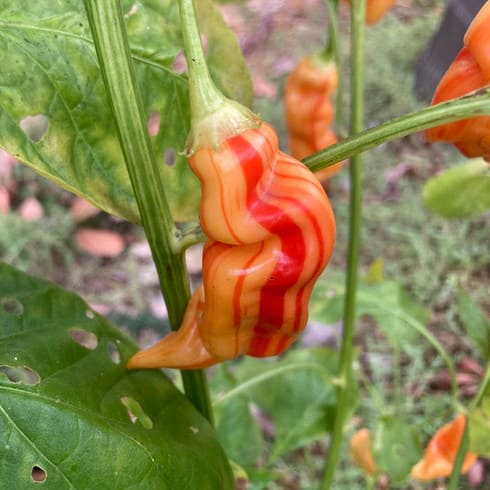
What makes Sugar Rush Stripey particularly appealing is how they bridge the gap between seriously hot and genuinely delicious. They’re hot enough to satisfy heat lovers but flavorful enough to appeal to people who care more about taste than pain.
The plants are productive and the peppers are absolutely beautiful, making them perfect for gardeners who want both flavor and visual appeal.
For the Adventurous: Complex Flavors with Serious Heat
Chocolate Habaneros – The Gourmet’s Choice
Chocolate habaneros have become one of my absolute favorite peppers for their unique flavor profile that sets them apart from their orange cousins. At 300,000 to 577,000 SHU, they’re actually hotter than regular habaneros, but what makes them special is their incredible complexity.
The flavor is rich and smoky with notes that remind me of dark chocolate and coffee, hence the name. There’s still that characteristic habanero fruitiness, but it’s deeper and more complex, with an almost wine-like quality that makes them perfect for gourmet applications.
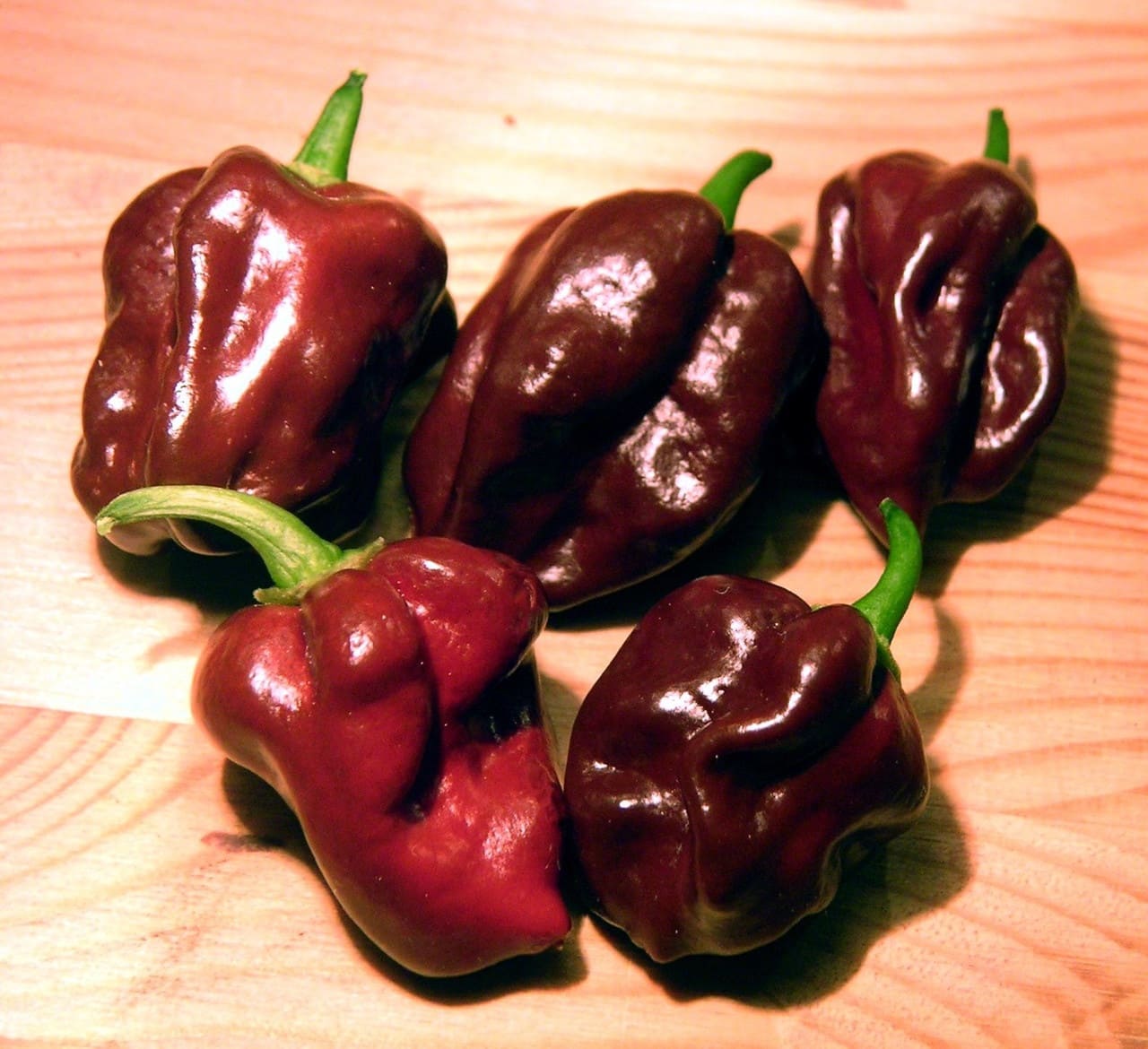
I use chocolate habaneros in small amounts to add depth to mole sauces and complex hot sauces. They pair beautifully with actual chocolate in dessert applications—a tiny amount in dark chocolate truffles creates this incredible warming sensation that builds slowly and pairs perfectly with the rich cocoa flavors.
Chocolate Bhut Jolokia – The Sophisticated Ghost
Chocolate Ghost peppers take everything I love about regular ghost peppers and add another layer of complexity. At 800,000 to 1,000,000+ SHU, they’re just as hot as their red cousins, but the flavor profile is distinctly different and, in my opinion, superior.
The chocolate variety has this incredible depth that reminds me of fine dark chocolate mixed with smoke and earth. There’s a richness to the flavor that’s missing from red ghosts, and they pair incredibly well with dishes that have chocolate or coffee notes.
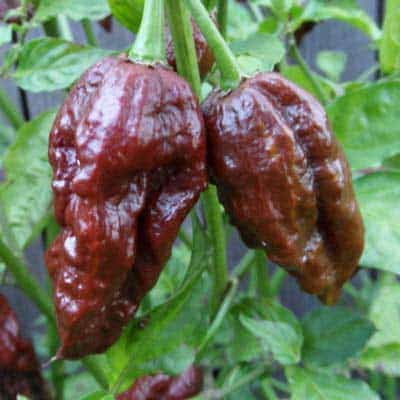
I use tiny amounts in mole sauces and have even experimented with adding microscopic amounts to chocolate truffles.
Ghost Peppers – Smoky Complexity Behind the Fire
I’ll be honest—my first encounter with a ghost pepper was humbling. At over 1,000,000 SHU, I thought I was ready for it. I was not. But after the initial shock wore off and after consuming what felt like half a gallon of milk, I became fascinated by the complex smoky flavors hidden beneath that volcanic heat.
Ghost peppers have this unique earthy, almost chocolate-like quality that makes them prized by serious chili enthusiasts. The flavor is complex and layered—there’s fruitiness, smokiness, and an almost metallic edge that’s unlike any other pepper.
The trick is using them in tiny amounts where you can appreciate the flavor without being overwhelmed by the heat.
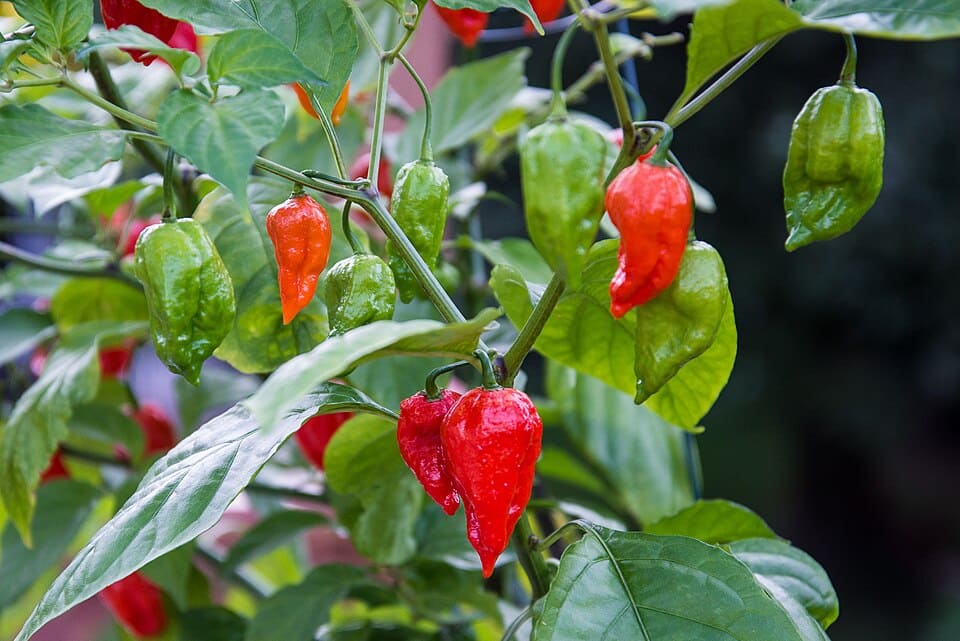
I learned to make ghost pepper salt by grinding dried ghost pepper with coarse sea salt in a 1:20 ratio. Just a pinch transforms grilled vegetables or meat with smoky heat that builds slowly rather than hitting you like a freight train. This taught me that even extremely hot peppers can be tamed and used as sophisticated flavor enhancers.
7 Pot Varieties – The Legendary Heat
7 Pot peppers get their name from the Caribbean claim that one pepper can spice seven pots of stew, and at 1,000,000+ SHU, that’s probably conservative. What makes 7 Pots special isn’t just their heat—it’s their incredible diversity of flavors within the family.
The 7 Pot Douglah (also called Chocolate 7 Pot) has become one of my favorites for its unique chocolate and berry flavors. Despite being one of the hottest peppers I grow, the flavor is so complex and appealing that I find myself coming back to it again and again in tiny amounts.
The 7 Pot Primo has this distinctive tail that makes it look almost like a miniature Carolina Reaper, and its flavor is intensely fruity with citrus notes. The 7 Pot Brain Strain gets its name from its wrinkled, brain-like appearance, but its flavor is remarkably smooth and fruity for such an intense pepper.
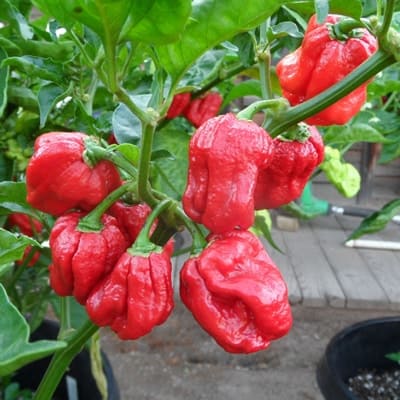
Trinidad Scorpion Varieties – The Fruity Fire Bombs
Trinidad Scorpion peppers, ranging from 1,200,000 to 2,000,000 SHU, have become some of my favorite superhot varieties because of their incredible flavor complexity. Unlike some extremely hot peppers that are just about heat, scorpions offer this amazing fruity character that makes the pain almost worthwhile.
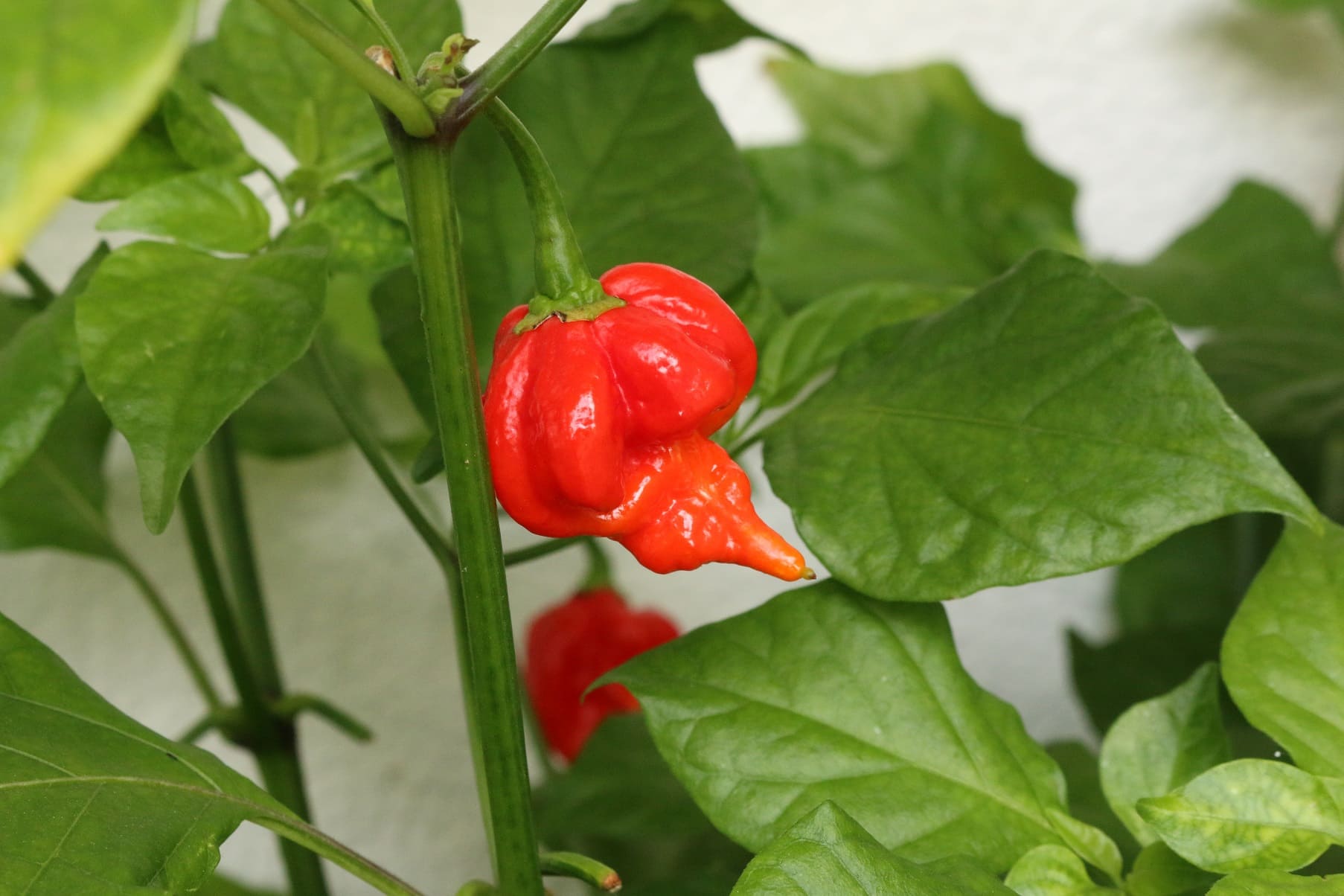
- The Moruga Scorpion, in particular, has this incredible fresh, fruity flavor that hits you before the heat builds. There’s something about the way the sweetness and fire interact that’s almost addictive.
- The Trinidad Scorpion Butch T has a slightly different character—more citrusy and sharp, with a heat that seems to hit different receptors than other superhots.
What I find fascinating about scorpion peppers is how the heat seems to come in waves. The initial bite is deceptively mild, then the heat builds and builds until it reaches this incredible crescendo. But throughout that entire journey, you can taste these complex fruit flavors that make the experience more than just about enduring pain.
Carolina Reapers – The Ultimate Challenge
At 1,400,000 to 2,200,000 SHU, Carolina Reapers are currently among the world’s hottest peppers, but surprisingly, they have a genuinely good flavor hiding behind that intense heat. There’s a sweetness and fruitiness that’s almost candy-like before the heat takes over completely.
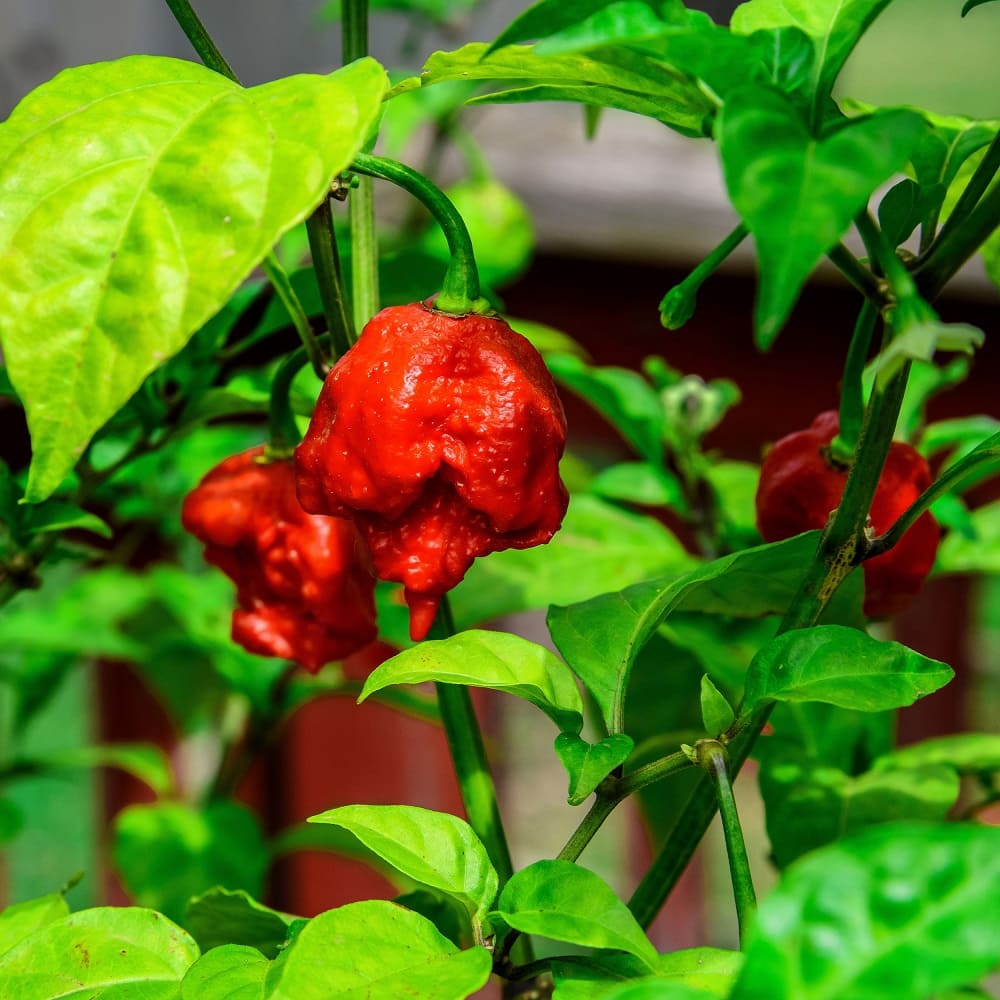
I’ve only used Reapers in hot sauce making, where tiny amounts can be blended with cooling ingredients like carrots and fruits. The key is respecting their power while finding ways to access their unique flavor characteristics.
Essential Growing Techniques for Maximum Flavor
Container Growing Success
Bigger containers equal bigger plants and more peppers. I learned this the hard way when my first habanero plant, grown in a tiny pot, produced exactly three peppers.
The next year, I used 5-gallon containers and got hundreds. For most pepper varieties, 5-gallon containers are the minimum, with larger varieties like poblanos benefiting from even bigger homes.
Temperature Management
Peppers are sun worshippers that need consistent warmth. I’ve noticed my plants in the sunniest spots not only produce more peppers but also develop more complex flavors. Night temperatures below 55°F or above 75°F can cause flower drop, so I use row covers during cool snaps and provide afternoon shade during extreme heat waves.
Safe Handling Practices
Working with hot peppers requires respect and preparation. I always wear nitrile gloves when harvesting or processing anything above jalapeño heat, and I keep these gloves separate from my regular gardening gloves.
Even with gloves, I’m careful not to touch my face, and I wash my hands thoroughly with dish soap (which cuts through capsaicin oils better than regular hand soap) after working with peppers.
For the really hot varieties, I also wear safety glasses when cutting them, as the oils can become airborne and irritate eyes and respiratory passages. I learned this lesson the hard way when processing a batch of ghost peppers—the kitchen became temporarily uninhabitable even with windows open.
Harvesting and Preserving Your Flavorful Bounty
Timing for Peak Flavor
Harvest timing dramatically affects flavor development. Green peppers generally have sharper, more vegetal tastes, while peppers allowed to ripen to their mature color develop sweetness and complexity. I use a mixed harvesting strategy: picking some peppers green for that sharp, bright flavor and letting others ripen fully for maximum sweetness.
Regular harvesting encourages continued production throughout the season. I check my plants every few days during peak season, as peppers can go from perfect to overripe quickly in hot weather.
Preservation Methods That Maintain Flavor
Drying concentrates flavors beautifully. I string smaller peppers like Thai chilis and cayennes to air dry, creating gorgeous and functional kitchen decorations. The concentrated flavors in dried peppers are incredible—it’s like the pepper’s essence distilled into pure flavor.
For fresh storage, I’ve found that peppers keep best in the refrigerator in perforated bags, which maintain humidity while preventing condensation. They typically stay fresh for 1 to 2 weeks this way.
Freezing is the simplest preservation method. I wash, dry, and freeze whole peppers in bags, perfect for adding to soups and stews later. This technique preserves most of the fresh flavor and all of the heat.
Quick-pickling creates amazing condiments. My go-to recipe uses equal parts water and vinegar with a tablespoon each of salt and sugar per cup of liquid. These pickled peppers are fantastic on sandwiches and tacos and keep for months in the refrigerator.
Creating Flavor Combinations That Sing
Through years of experimentation, I’ve discovered some incredible flavor combinations that showcase what homegrown peppers can really do. Habaneros paired with mango create pure magic in salsas—the tropical fruit flavors complement each other perfectly while the mango’s sweetness tames the heat just enough to let the complex flavors shine through.
Poblanos and cheese are a classic combination for good reason. The earthy, slightly smoky flavor of roasted poblanos provides the perfect backdrop for creamy, mild cheeses in dishes like chiles rellenos and quesadillas.
One of my more adventurous discoveries was combining ghost pepper with dark chocolate. It sounds crazy, but the smoky, complex flavors of ghost pepper pair beautifully with high-quality dark chocolate in small amounts. I make a hot chocolate where a tiny pinch of ghost pepper powder transforms the drink into something extraordinary.
Aji Amarillo and seafood is a Peruvian tradition that’s absolutely addictive. The bright, fruity heat of aji amarillo enhances fish and shellfish without overpowering their delicate flavors.
Troubleshooting Common Challenges
When Germination Goes Slowly
Pepper seeds can be stubborn, especially hot varieties. I use a heat mat to keep soil temperature around 80°F, which dramatically improves germination rates and timing. Without supplemental heat, some varieties can take 3 to 4 weeks to germinate, while heated seeds often sprout in 7 to 10 days.
Managing Poor Fruit Set
This frustrating problem often happens when temperatures are too high (over 90°F) or too low (under 60°F) during flowering. I’ve learned to be patient—production often picks up when temperatures moderate. Providing afternoon shade during extreme heat and using row covers during cool snaps can help maintain the ideal flowering temperature range.
Dealing with Pests Naturally
Aphids are the most common pepper pest in my garden. I’ve had excellent success with beneficial insects like ladybugs and lacewings for natural control. I also plant marigolds and basil near my peppers, which seem to help repel various pests while attracting beneficial insects.
Common Questions from Fellow Pepper Enthusiasts
- What’s the best pepper for someone who wants flavor without too much heat?
Start with poblanos or Anaheim peppers. They have wonderful, complex flavors with minimal heat that won’t overwhelm your palate. Banana peppers are also excellent for their sweet, tangy character that enhances rather than dominates dishes.
- How long does it take for pepper plants to start producing?
Most varieties start flowering 8 to 10 weeks after transplanting, with first fruits ready 3 to 4 weeks after that. Hot varieties often take longer than sweet peppers, and superhot varieties can take the entire season to produce mature fruits.
- Can I save seeds from my peppers?
Absolutely! Open-pollinated varieties will produce true-to-type plants that match the parent. Hybrid varieties may not reproduce the parent plant’s exact characteristics, but they’re still fun to experiment with and often produce interesting variations.
- How do I build up my heat tolerance gradually?
Start small and work your way up slowly. Your taste buds will adapt over time if you’re consistent. Always have dairy on hand when trying new varieties, and don’t be discouraged if a pepper seems too hot at first—your tolerance will develop with regular exposure.
Your Flavorful Future Awaits
Three years after that chance encounter in the garden center, my pepper garden has become one of my greatest sources of joy and culinary inspiration. Every season brings new discoveries—new varieties to try, new flavor combinations to explore, and new friends made over shared pepper tastings and the occasional emergency glass of milk.
The beauty of growing peppers lies not just in the harvest, but in the journey of discovery. Each variety has its own personality, its own story to tell through flavor. Whether you’re drawn to the gentle sweetness of a perfectly ripe poblano or the complex fire of a ghost pepper, there’s a pepper out there waiting to surprise and delight you.
Start small, be patient with both your plants and your palate, and remember that the best pepper is the one that brings you joy. Whether that’s a mild banana pepper that reminds you of summer picnics or a habanero that challenges your taste buds and opens new culinary doors, your pepper garden will reward your curiosity with flavors you never knew existed.
The journey of a thousand flavors begins with a single seed. Plant it, nurture it, and prepare to be amazed by the incredible world of tastes that awaits in your own backyard.
Happy growing, and may your harvest be both bountiful and deliciously memorable!
